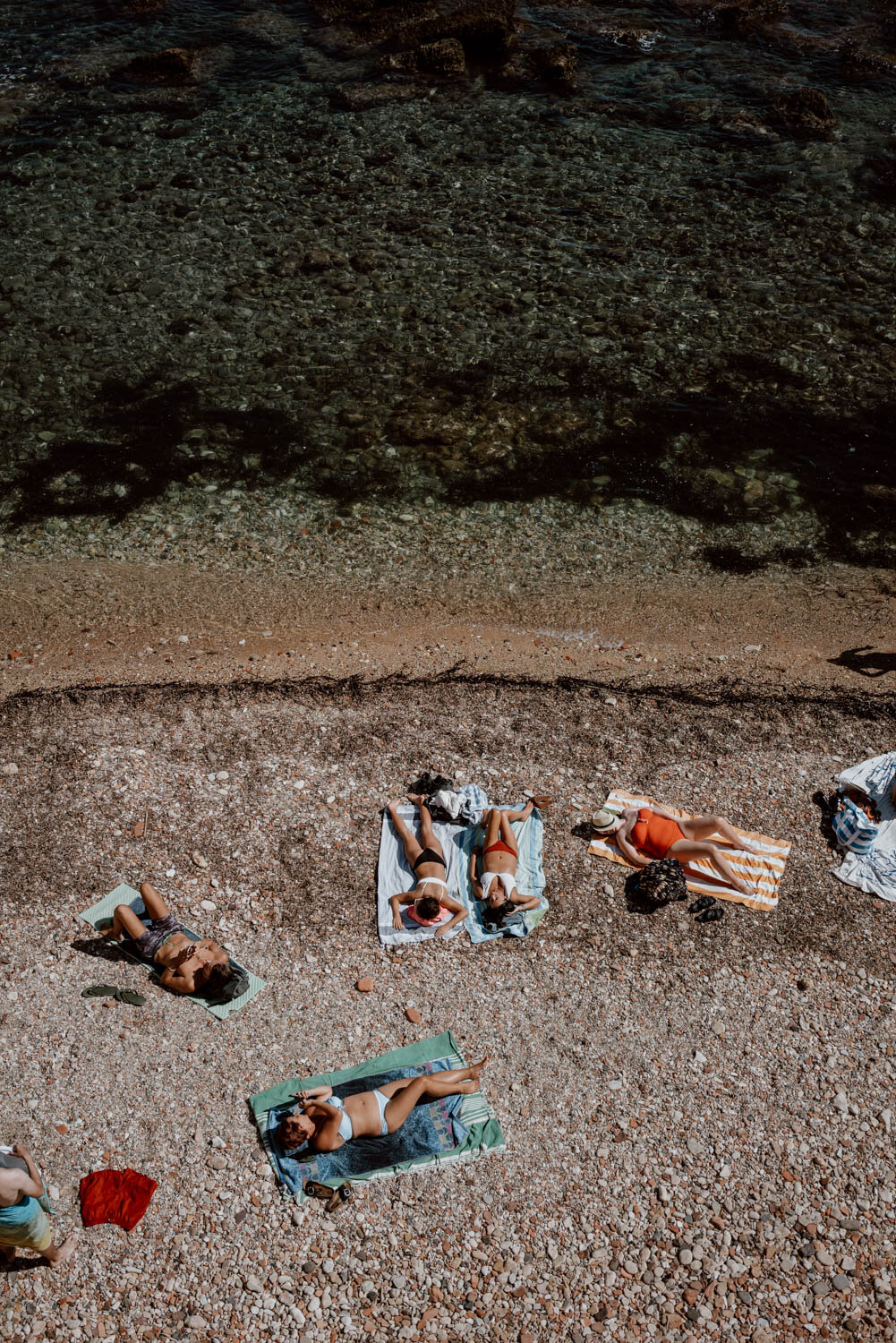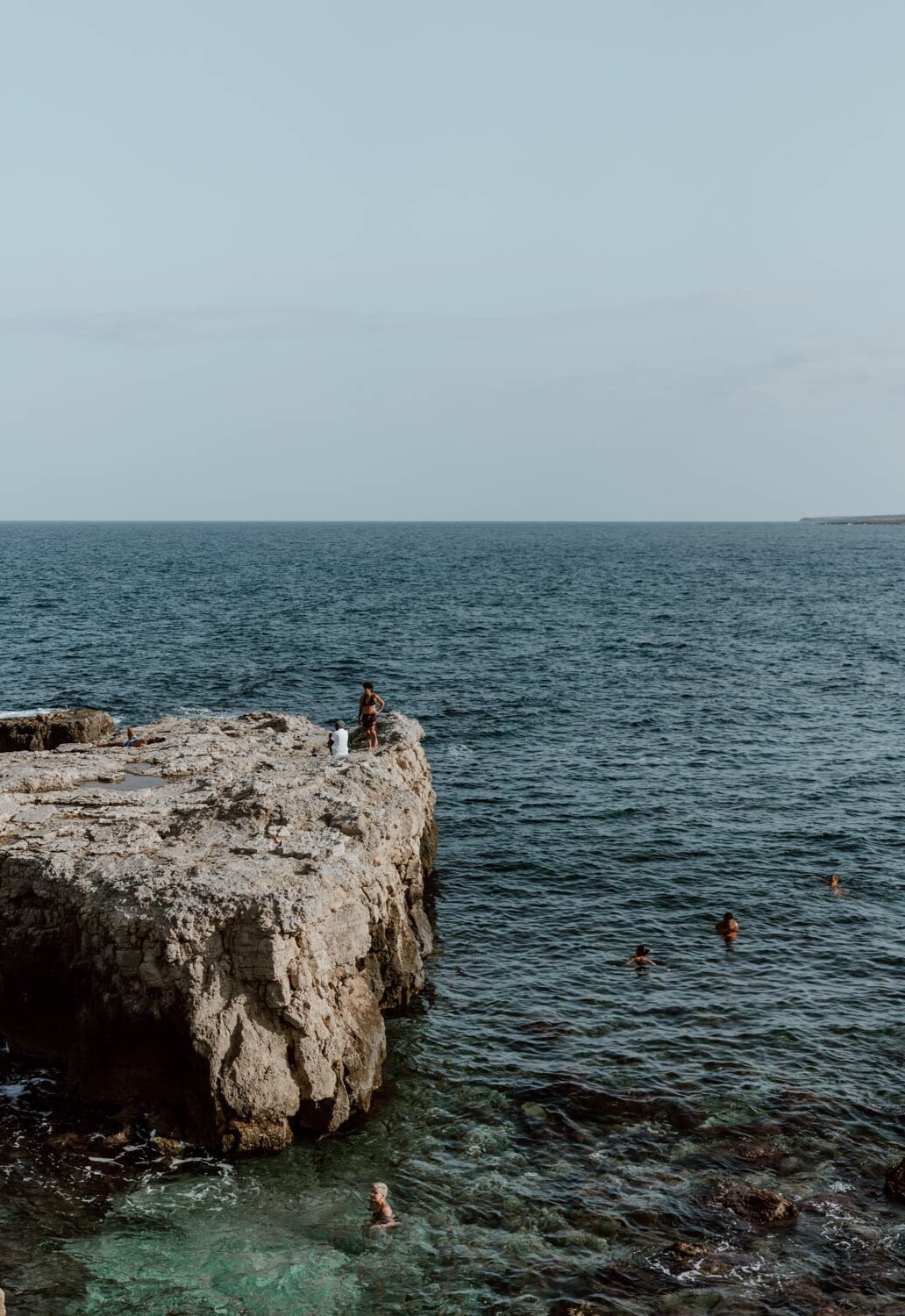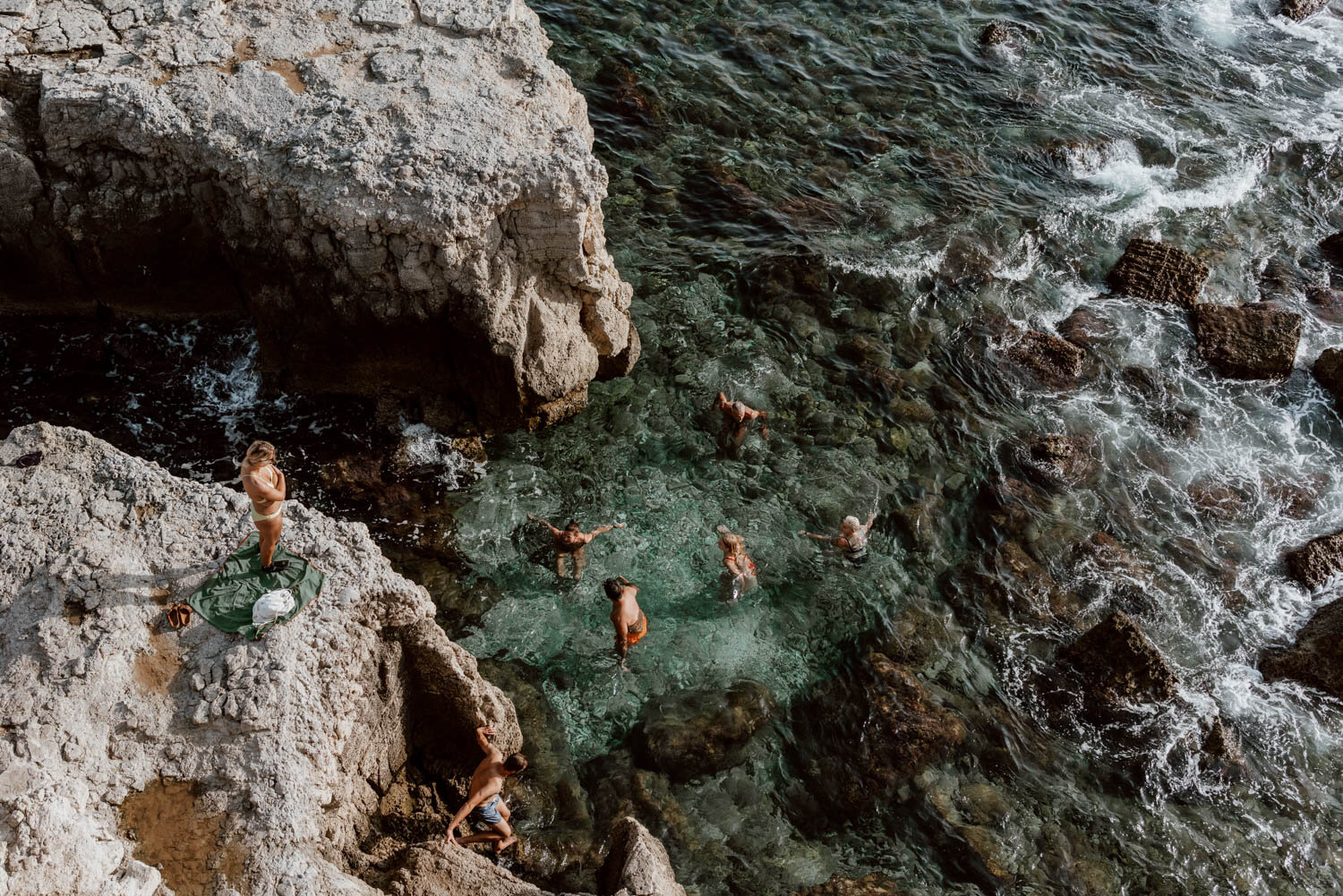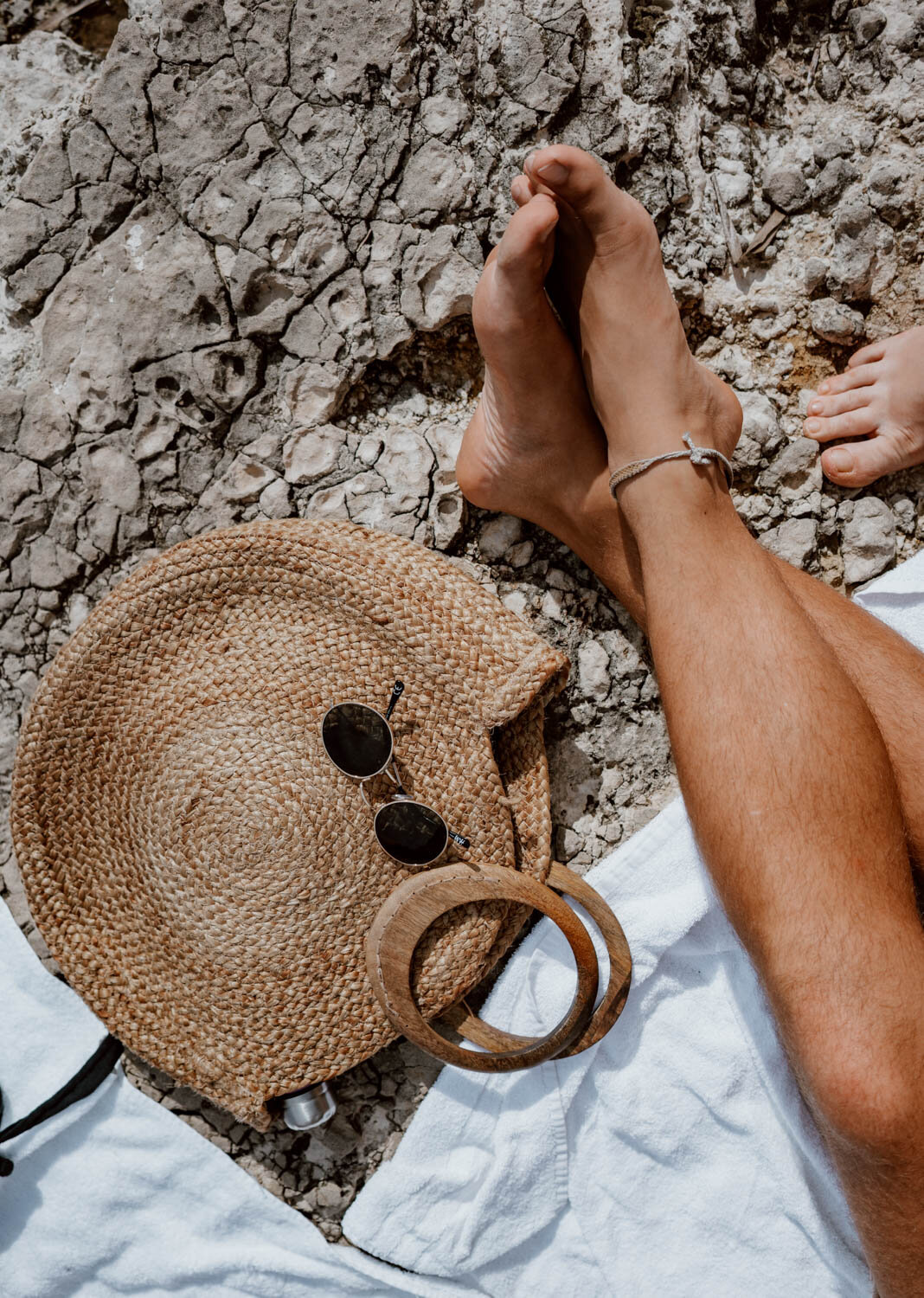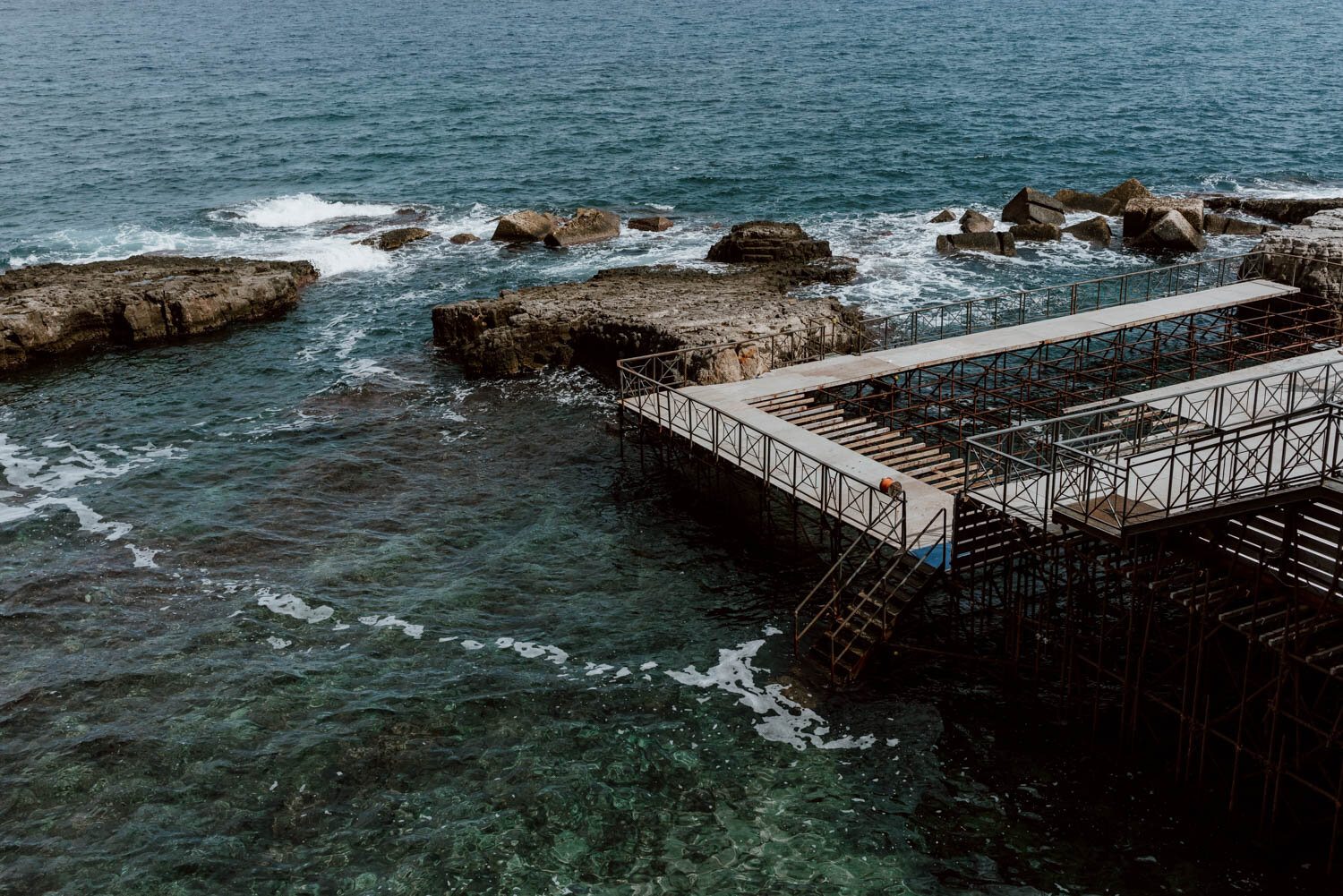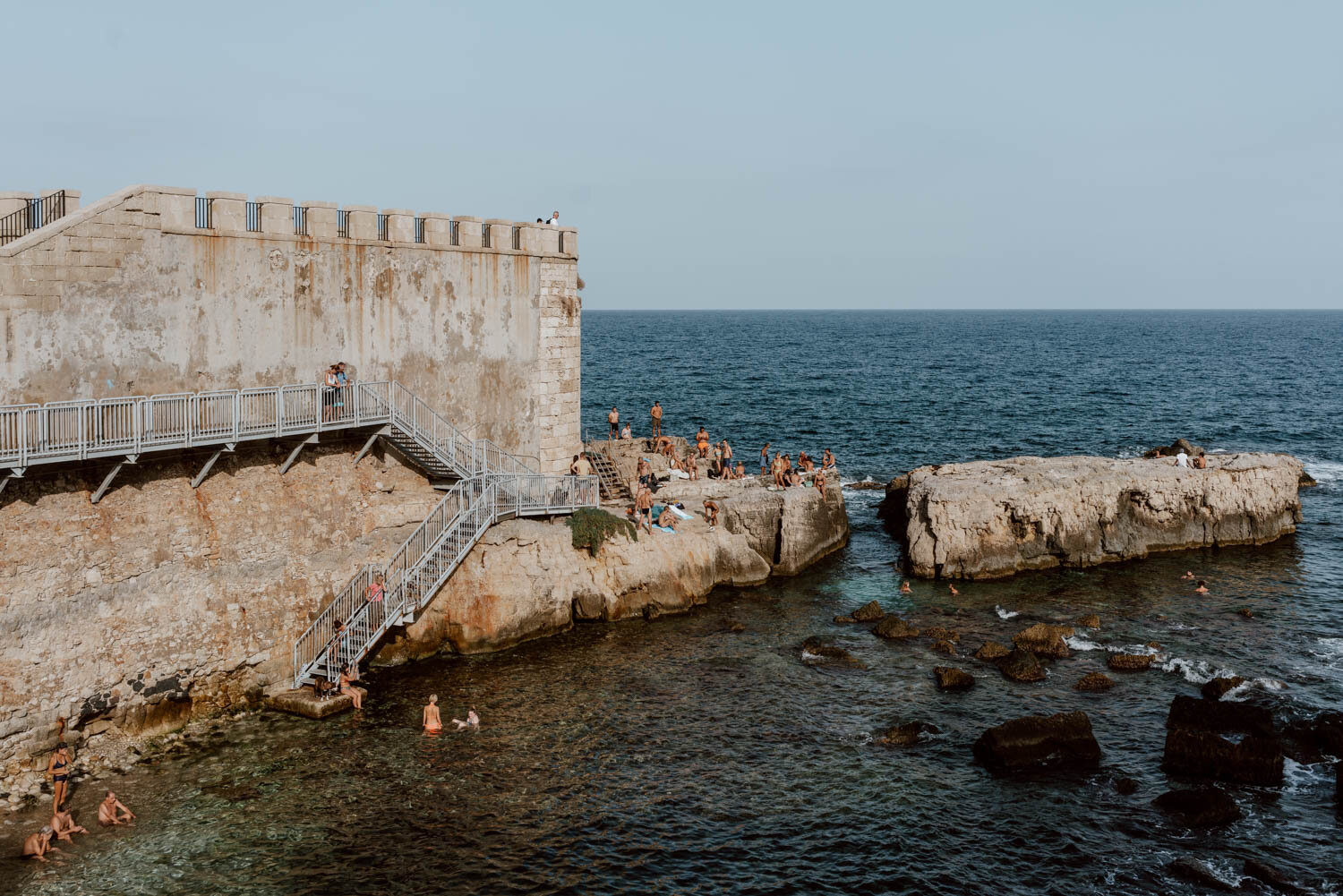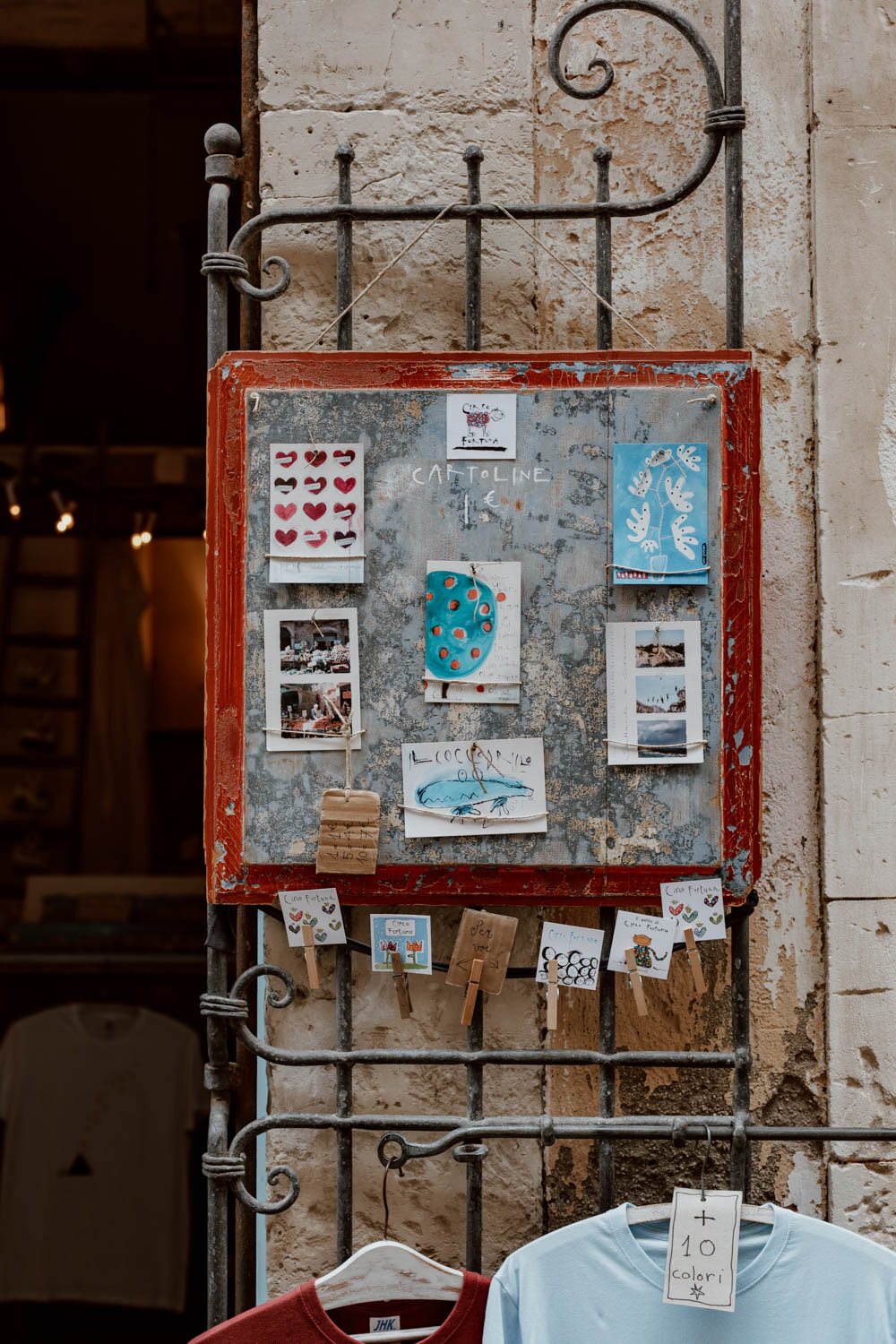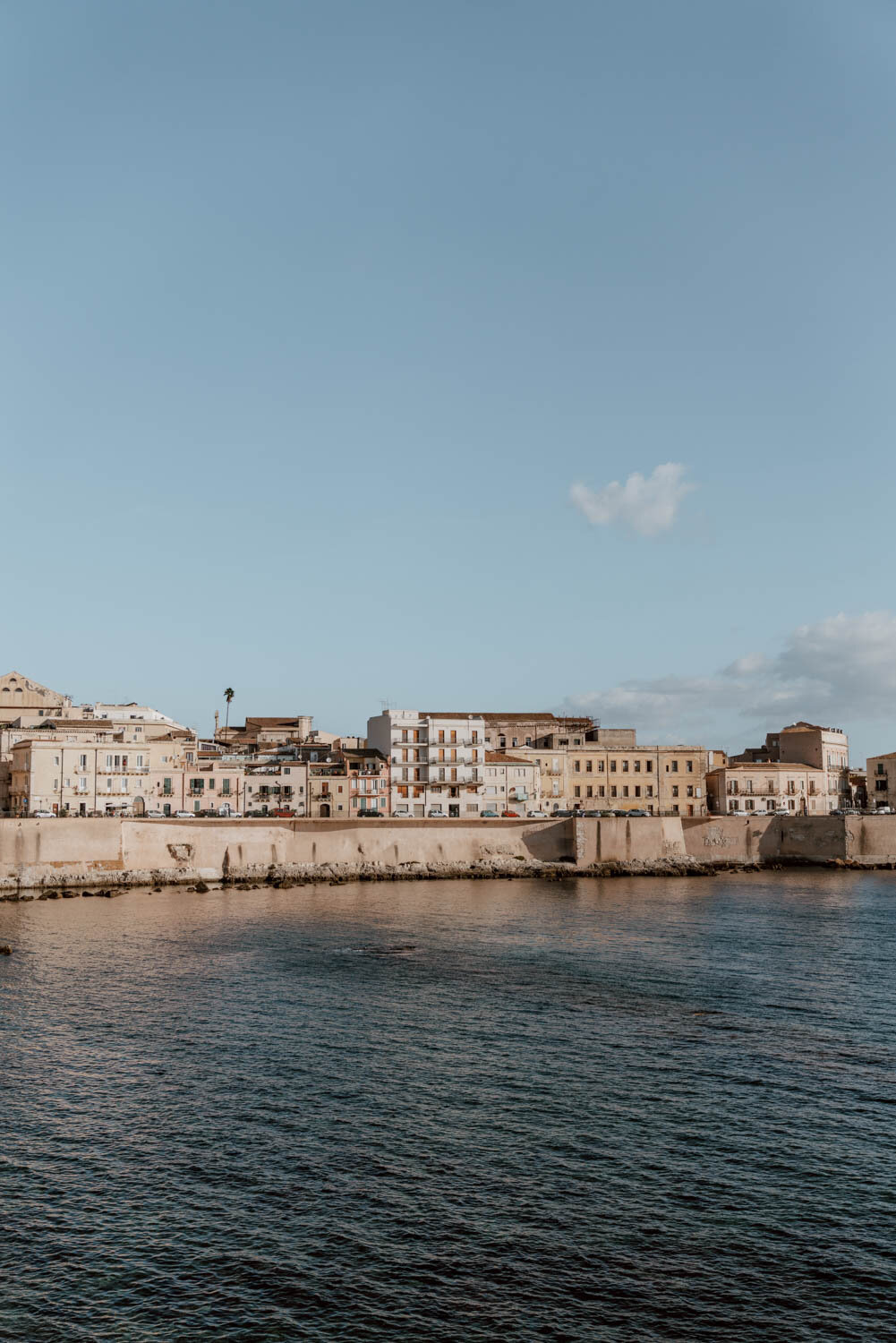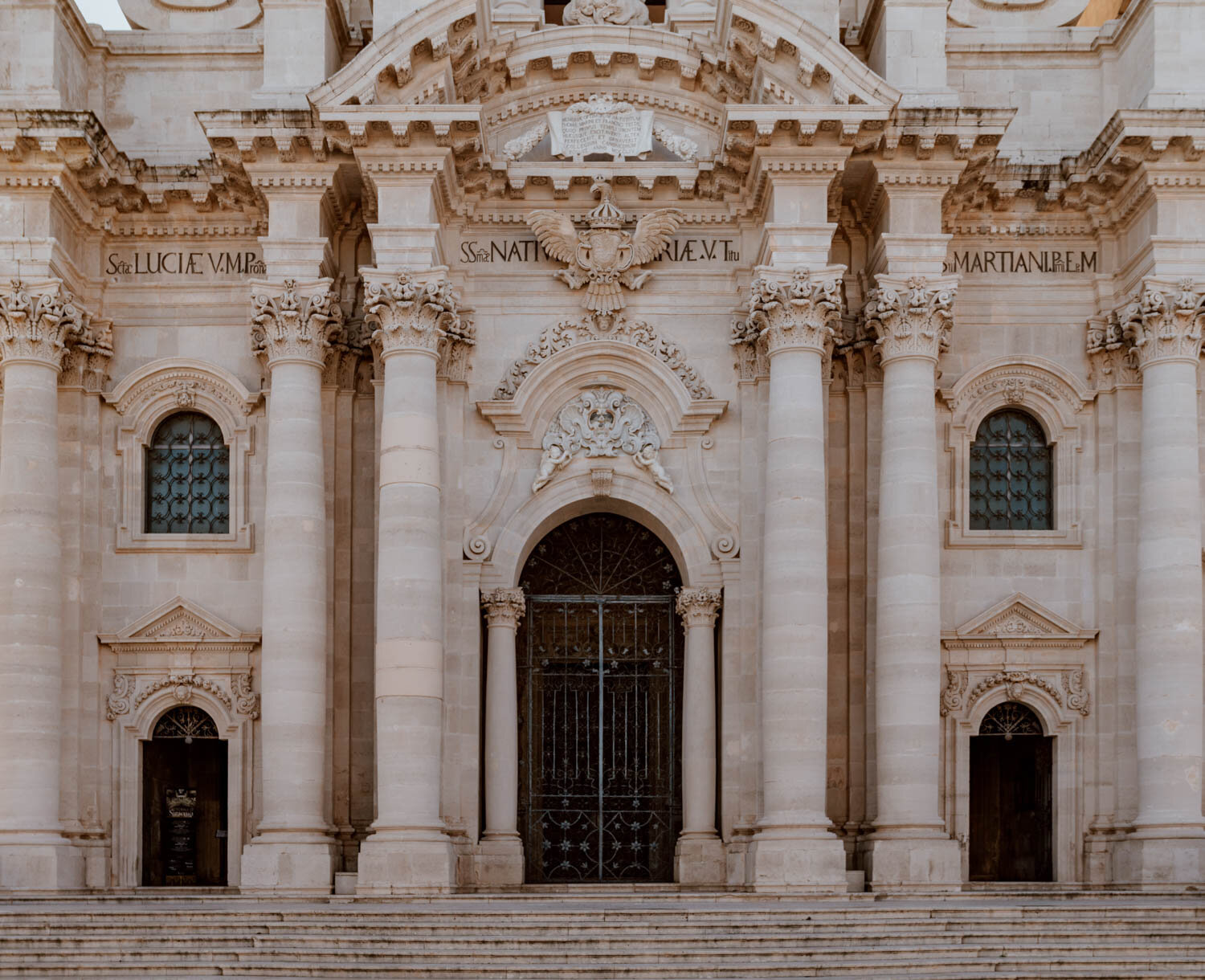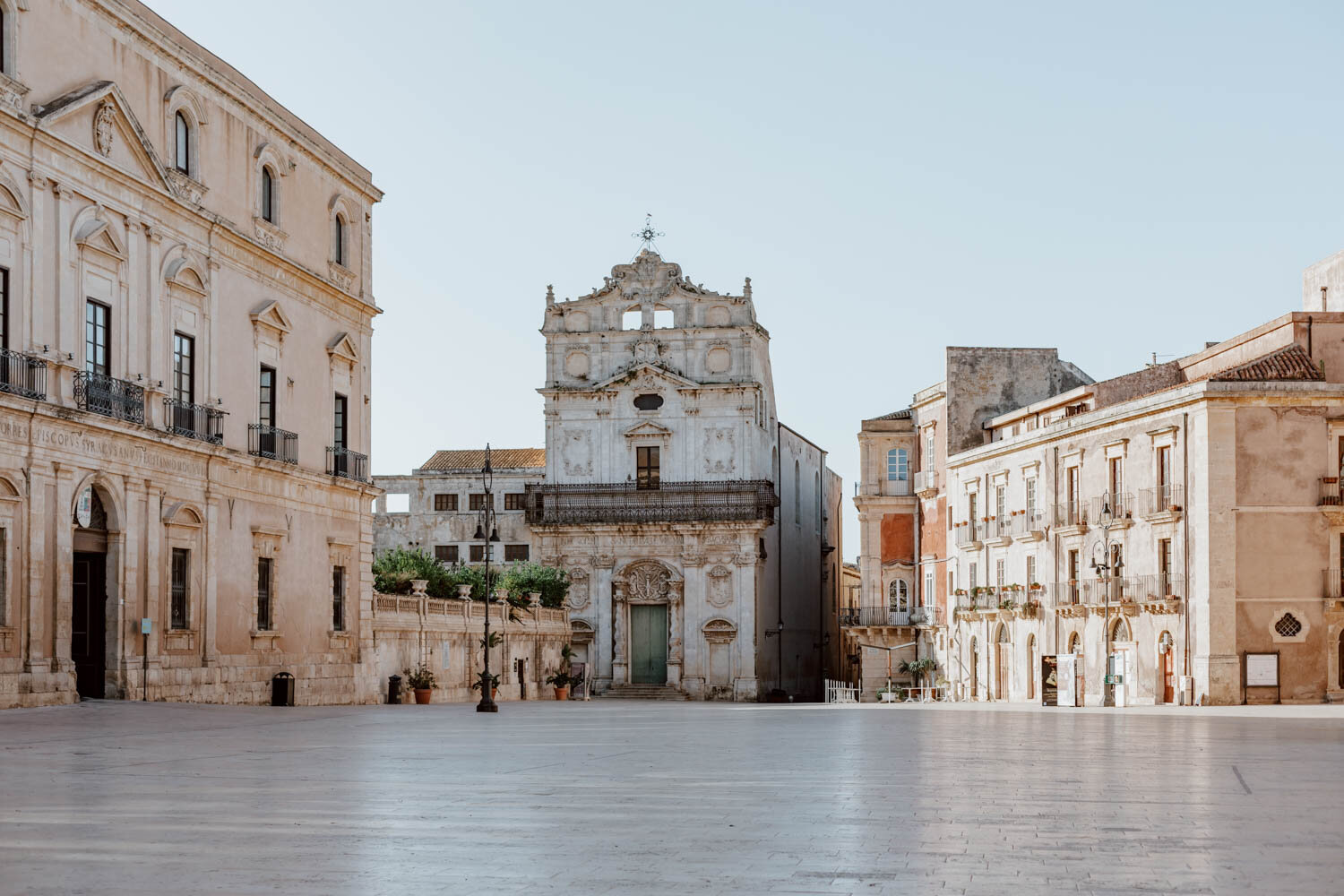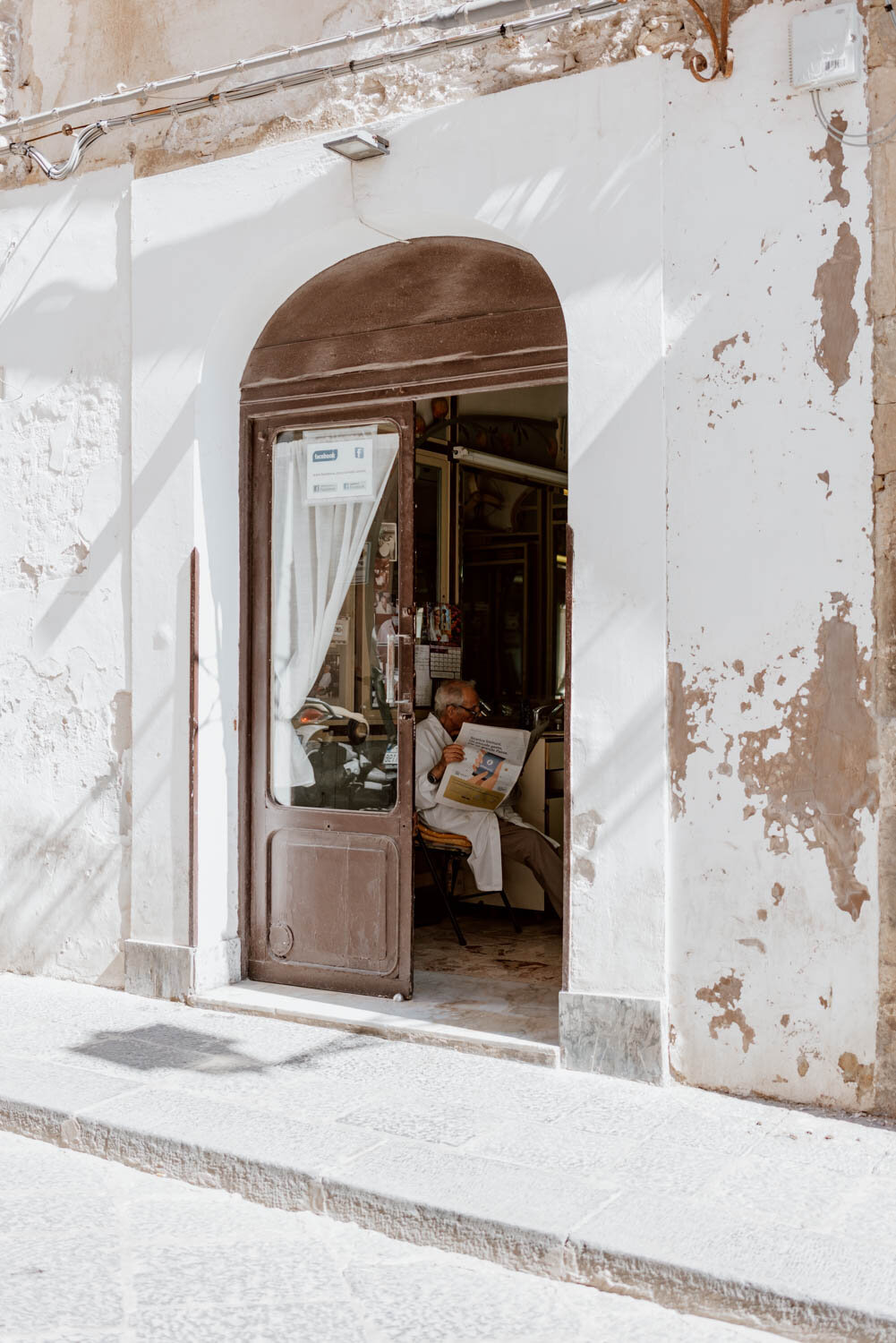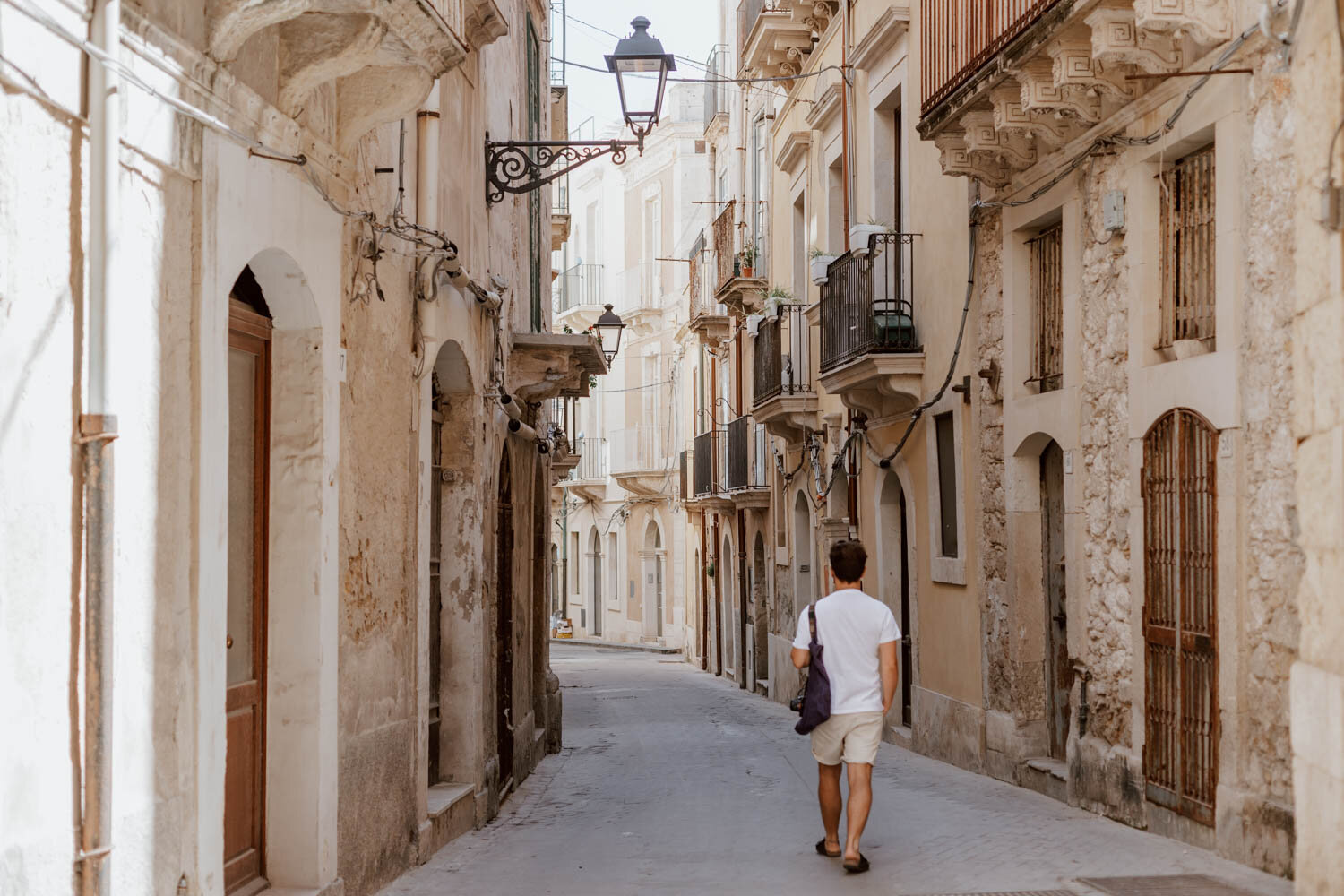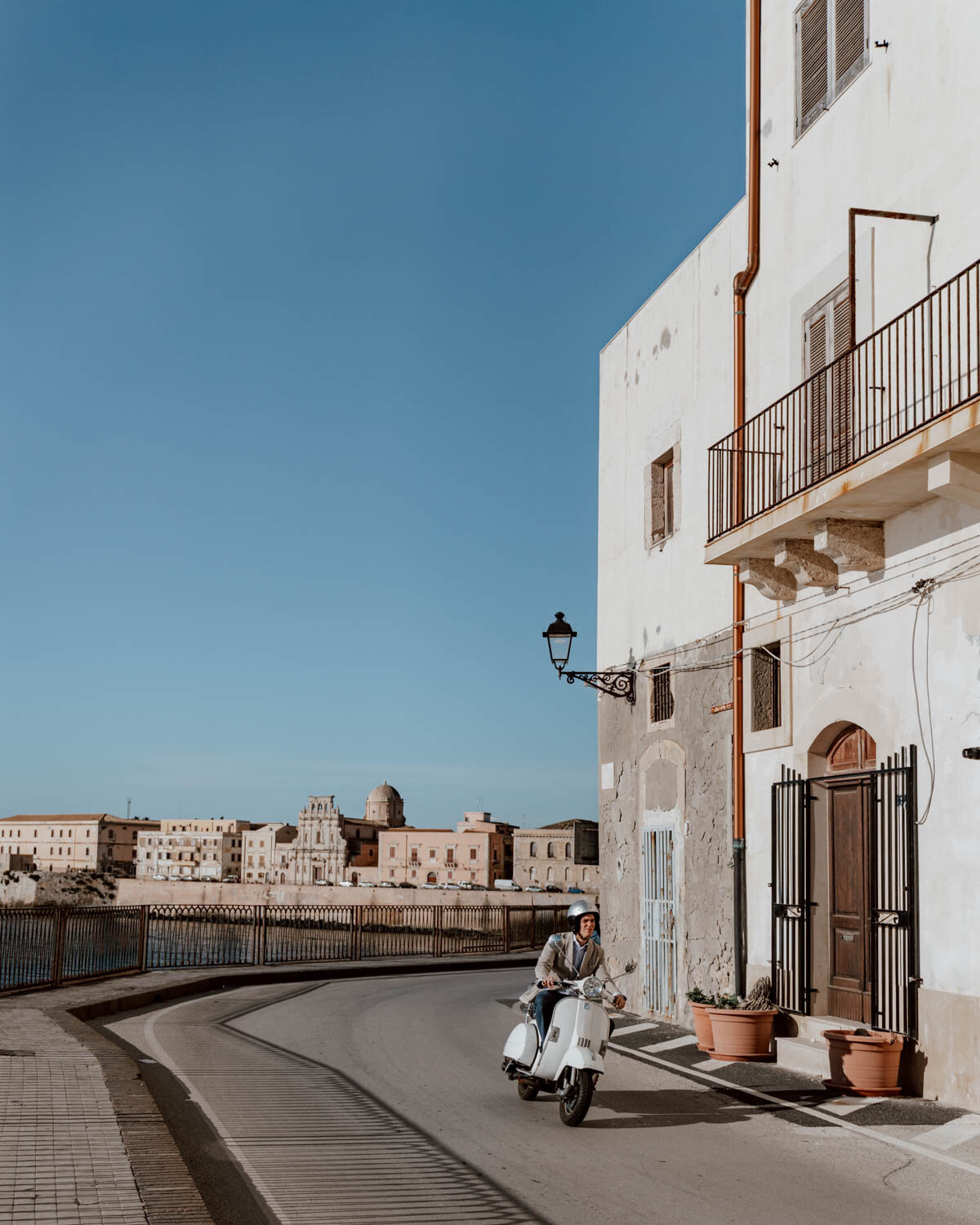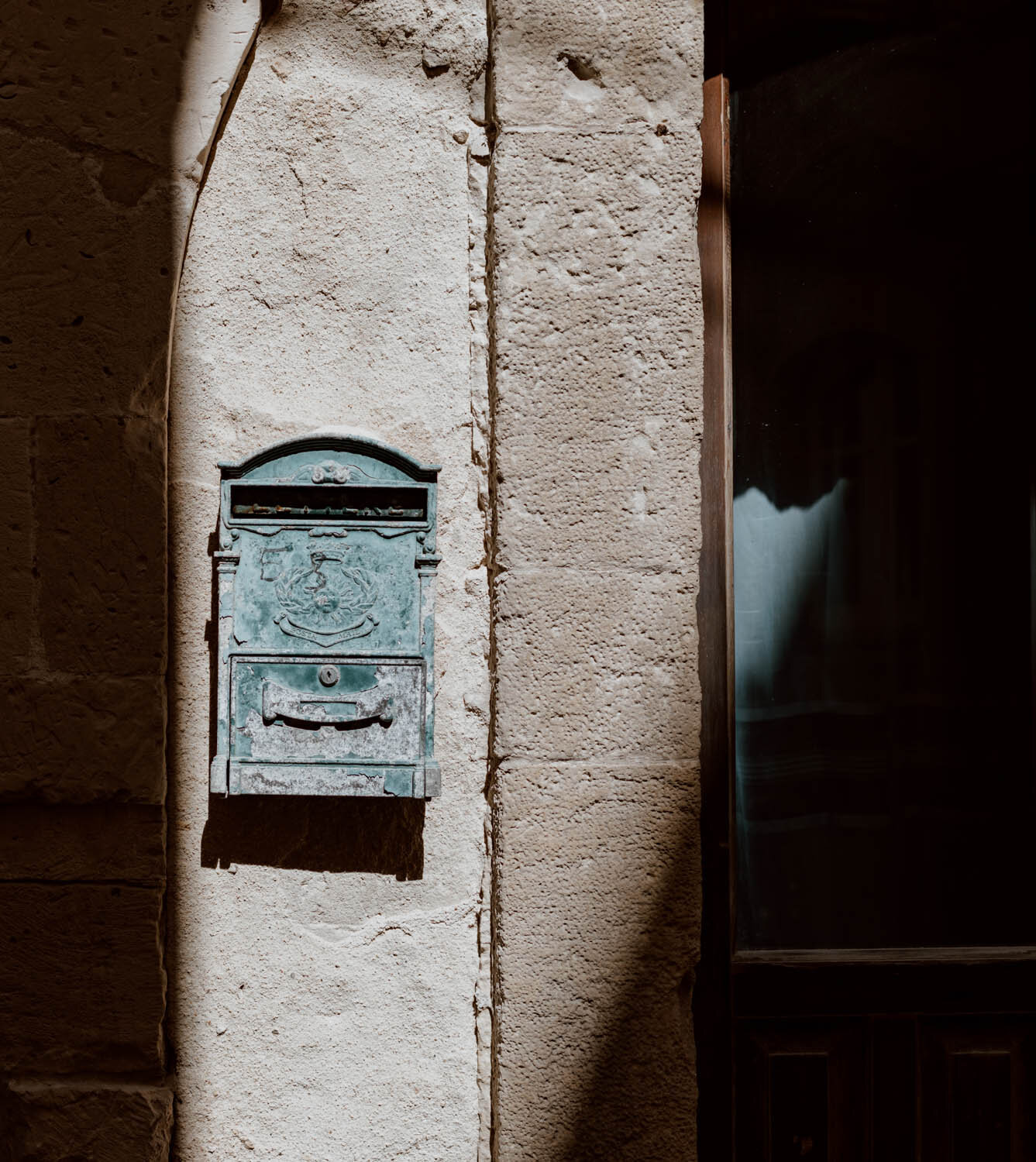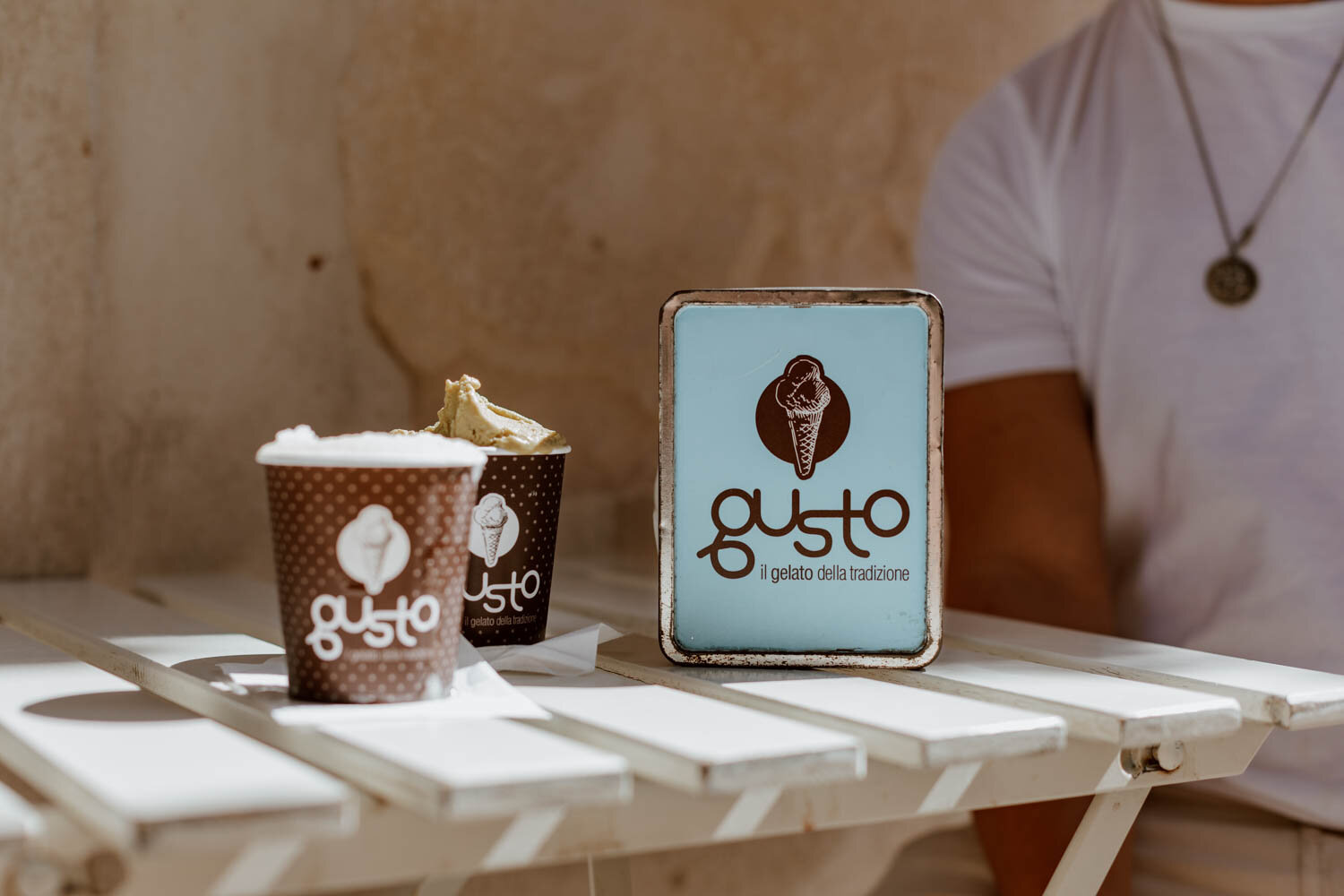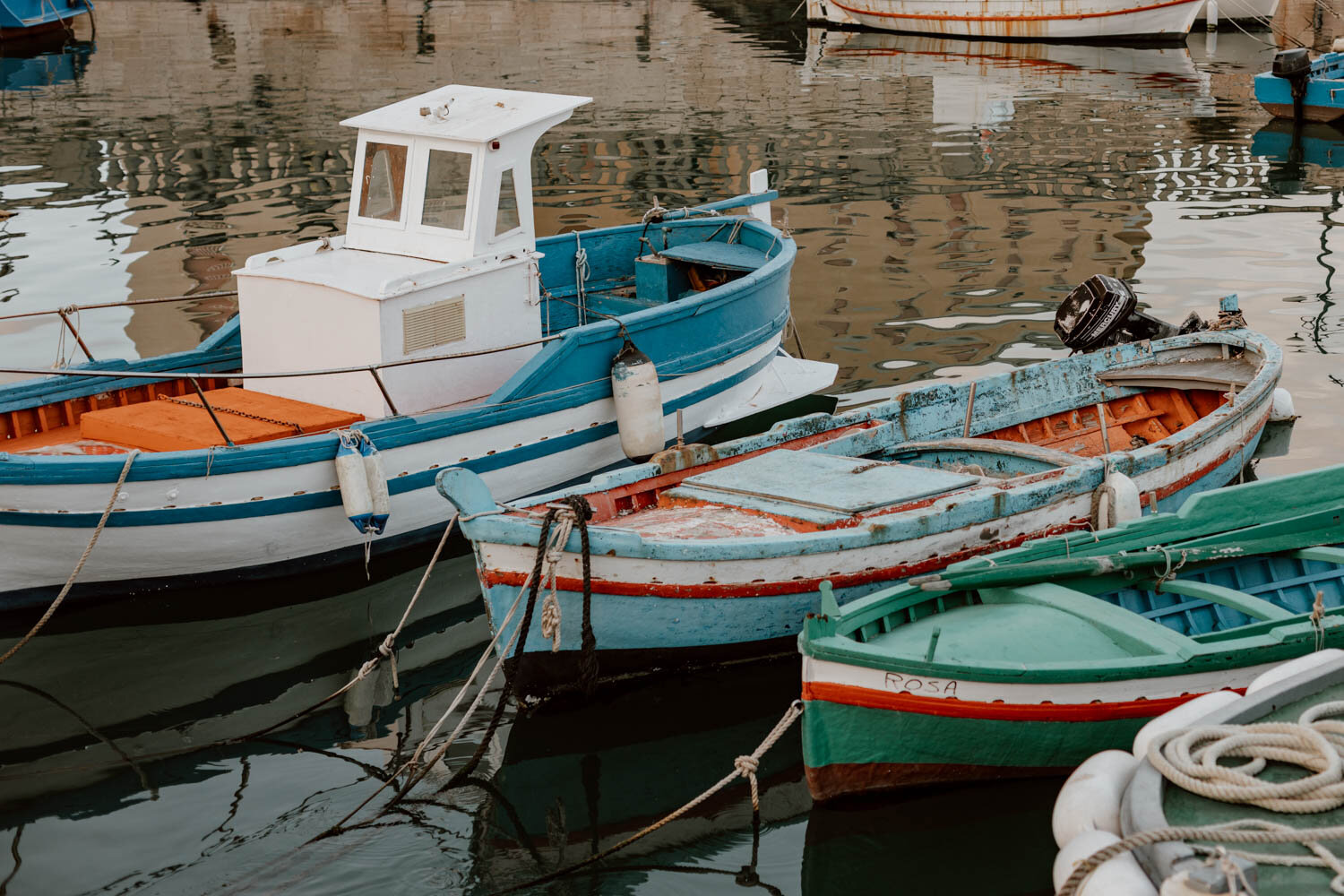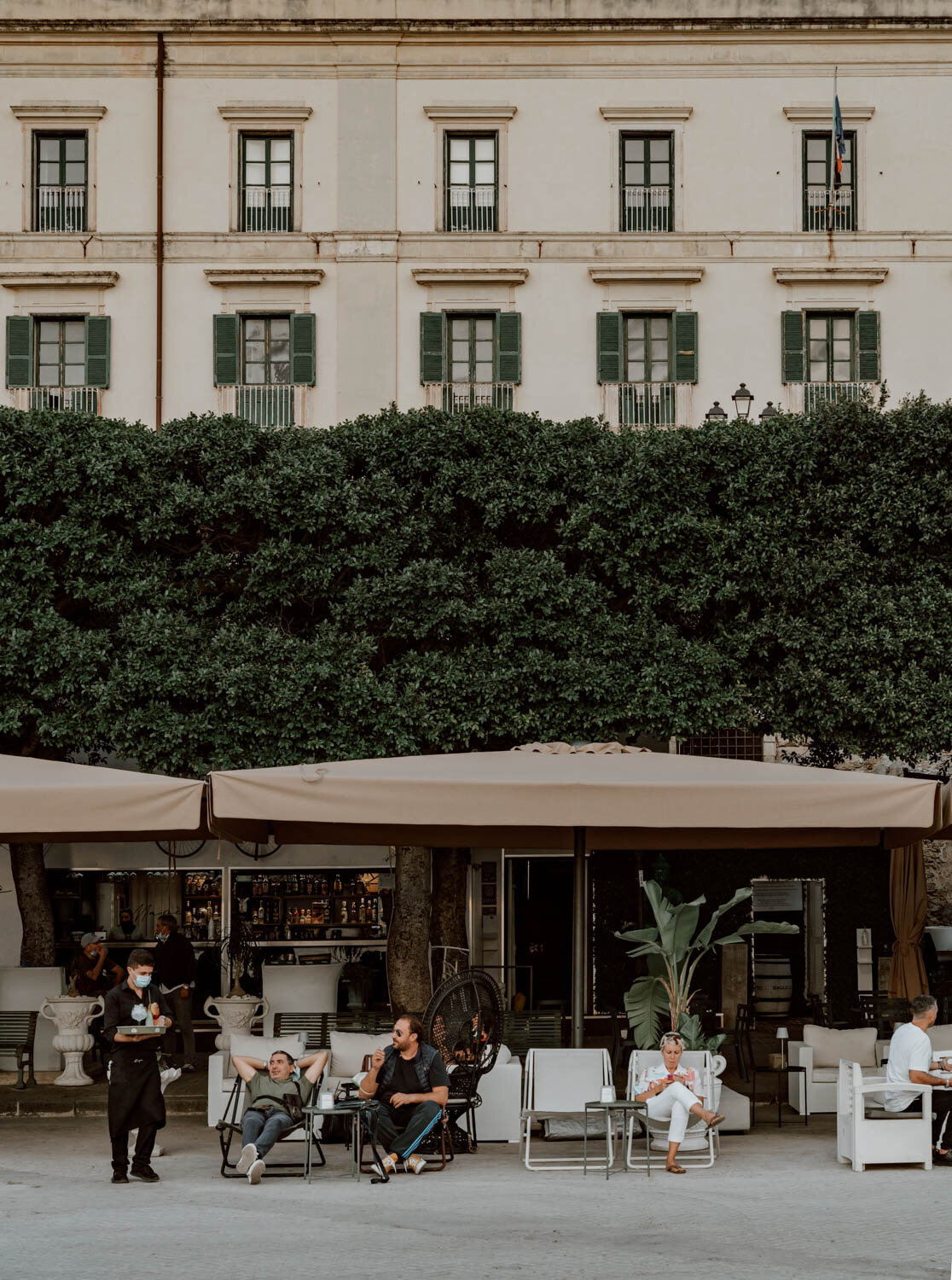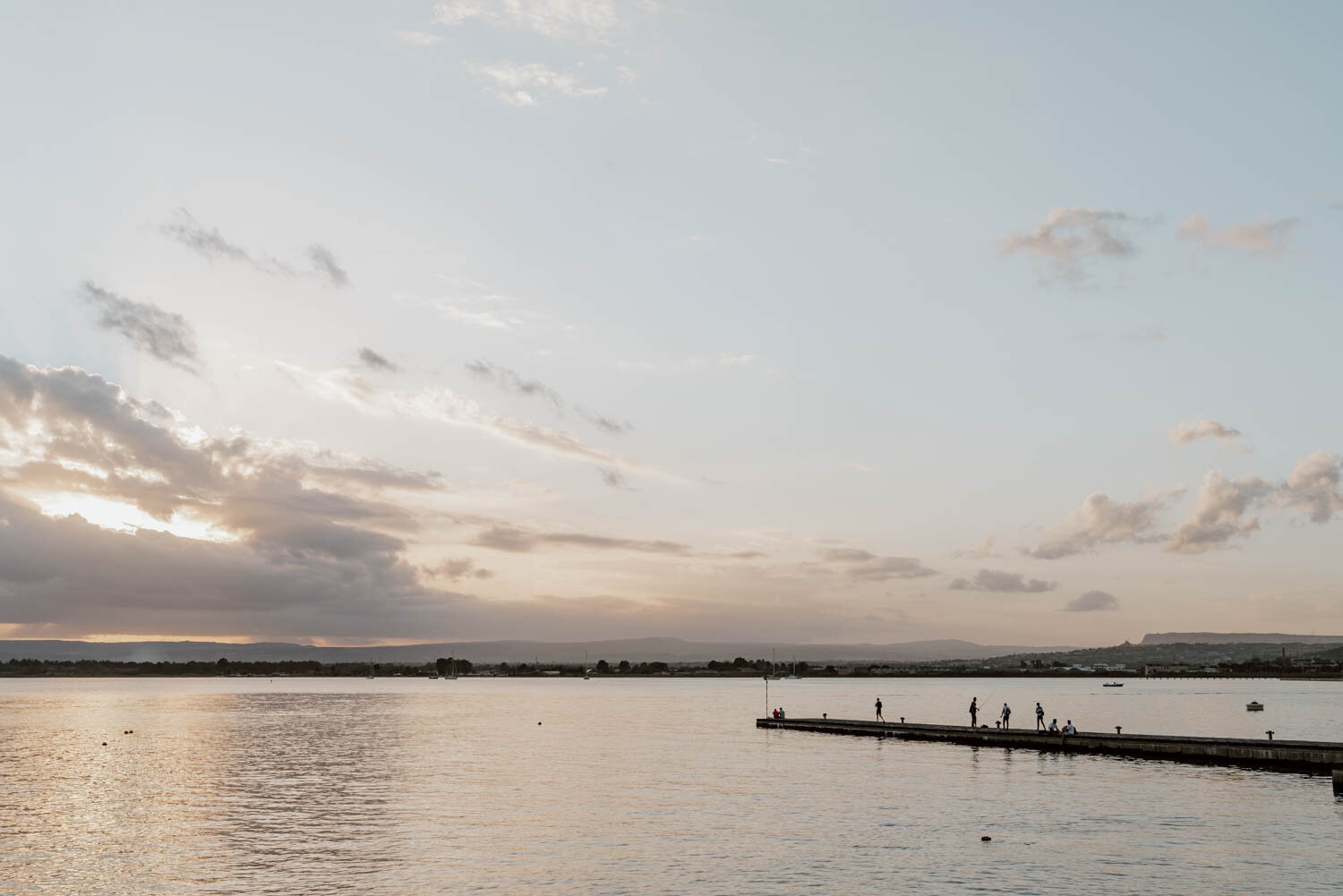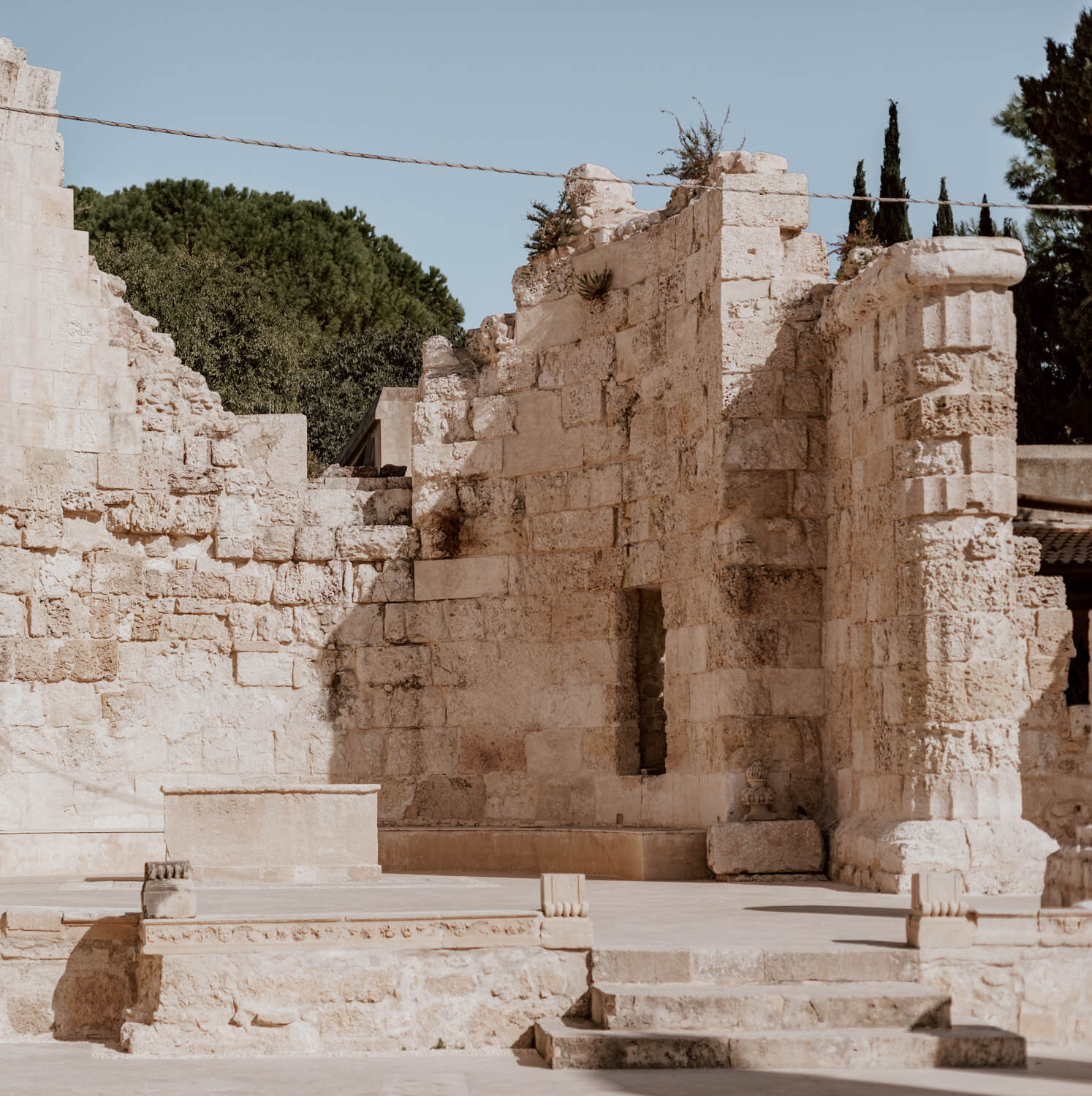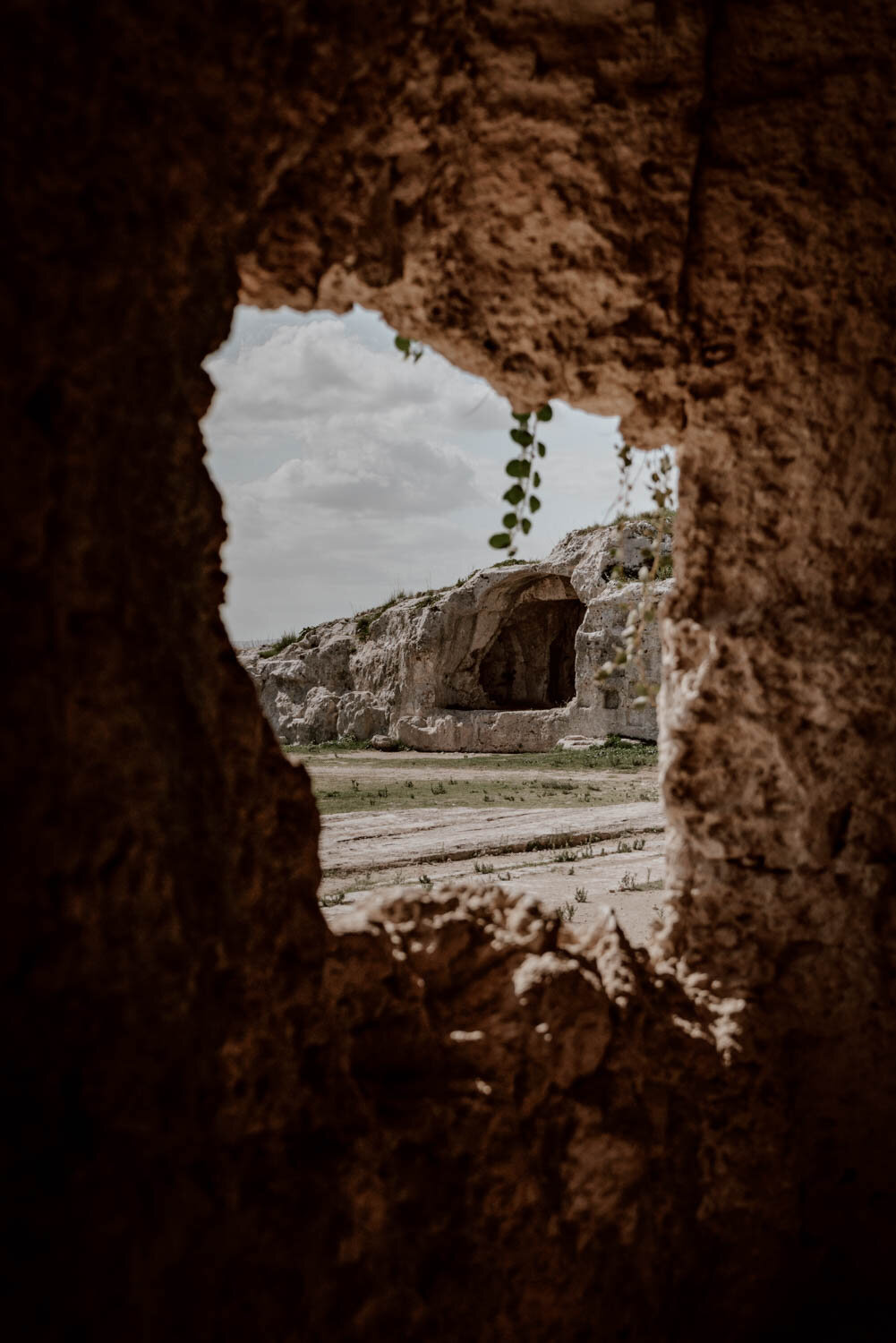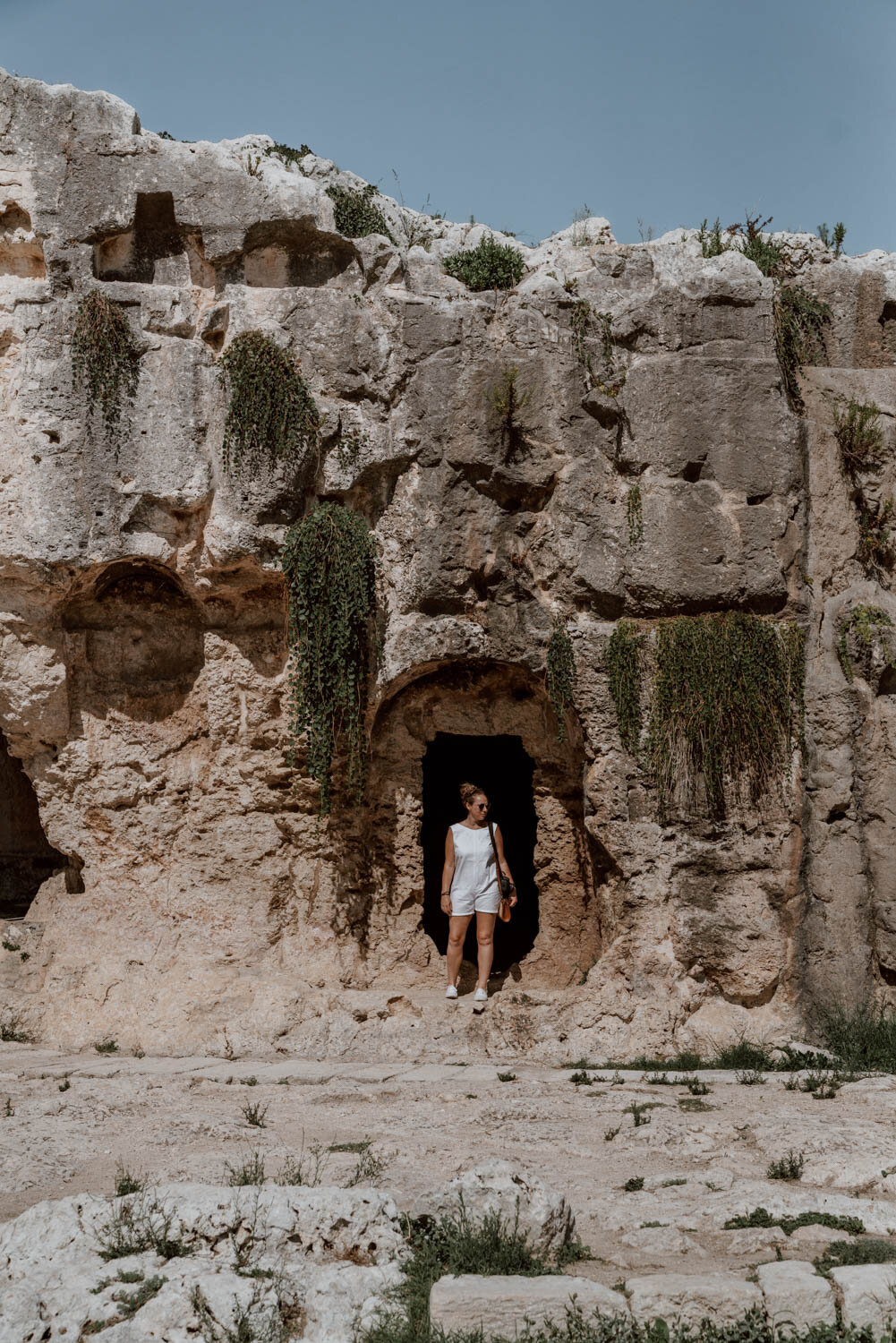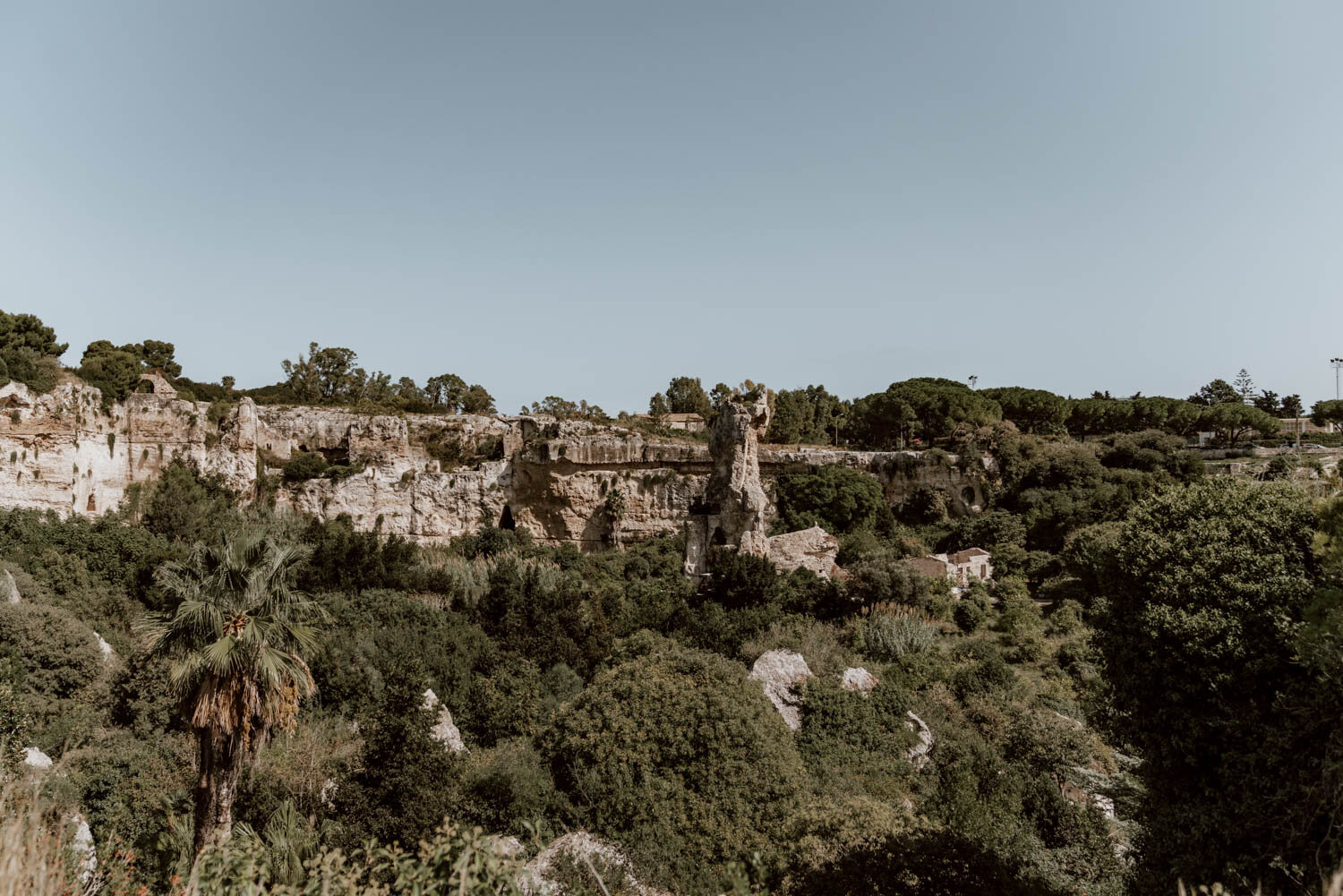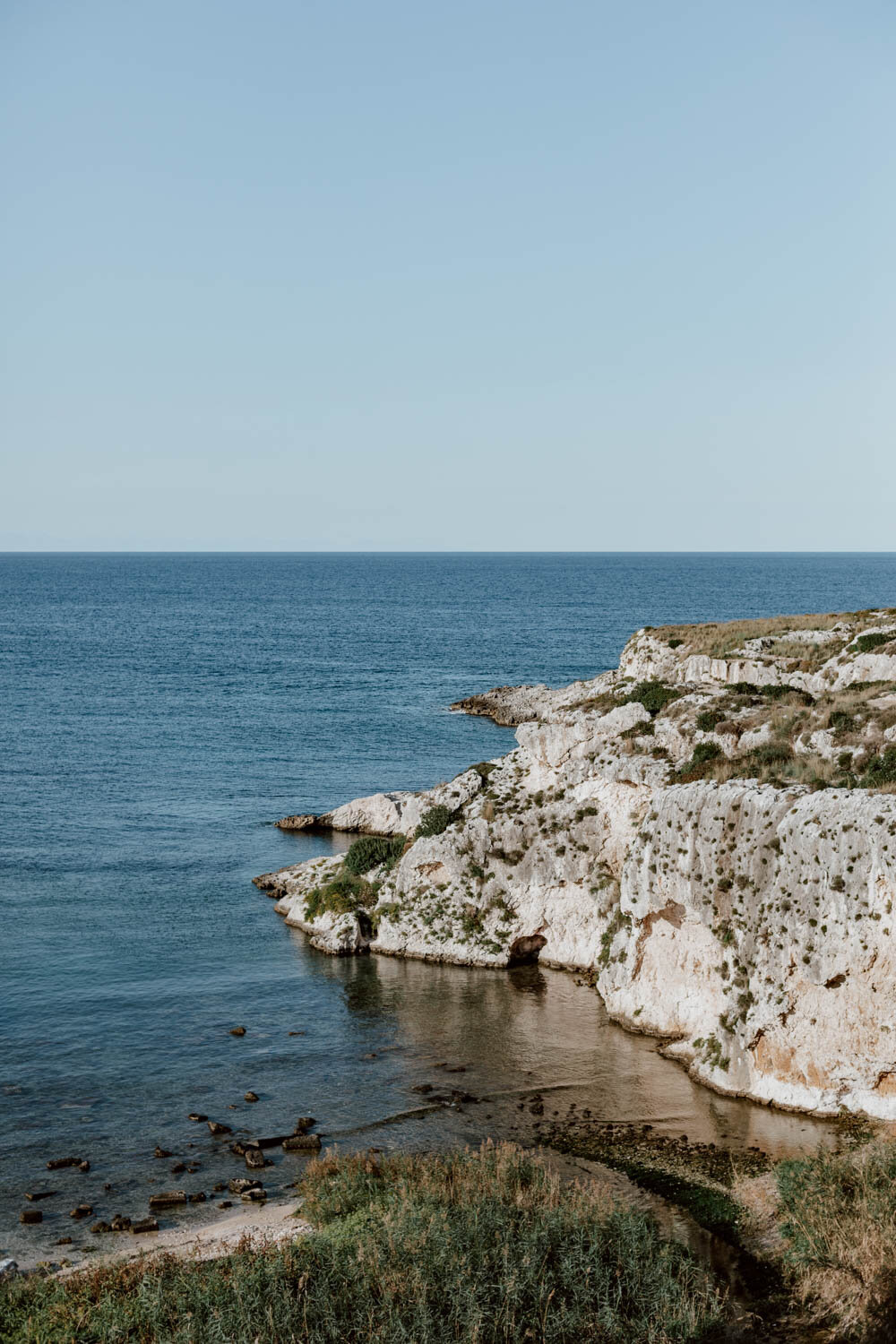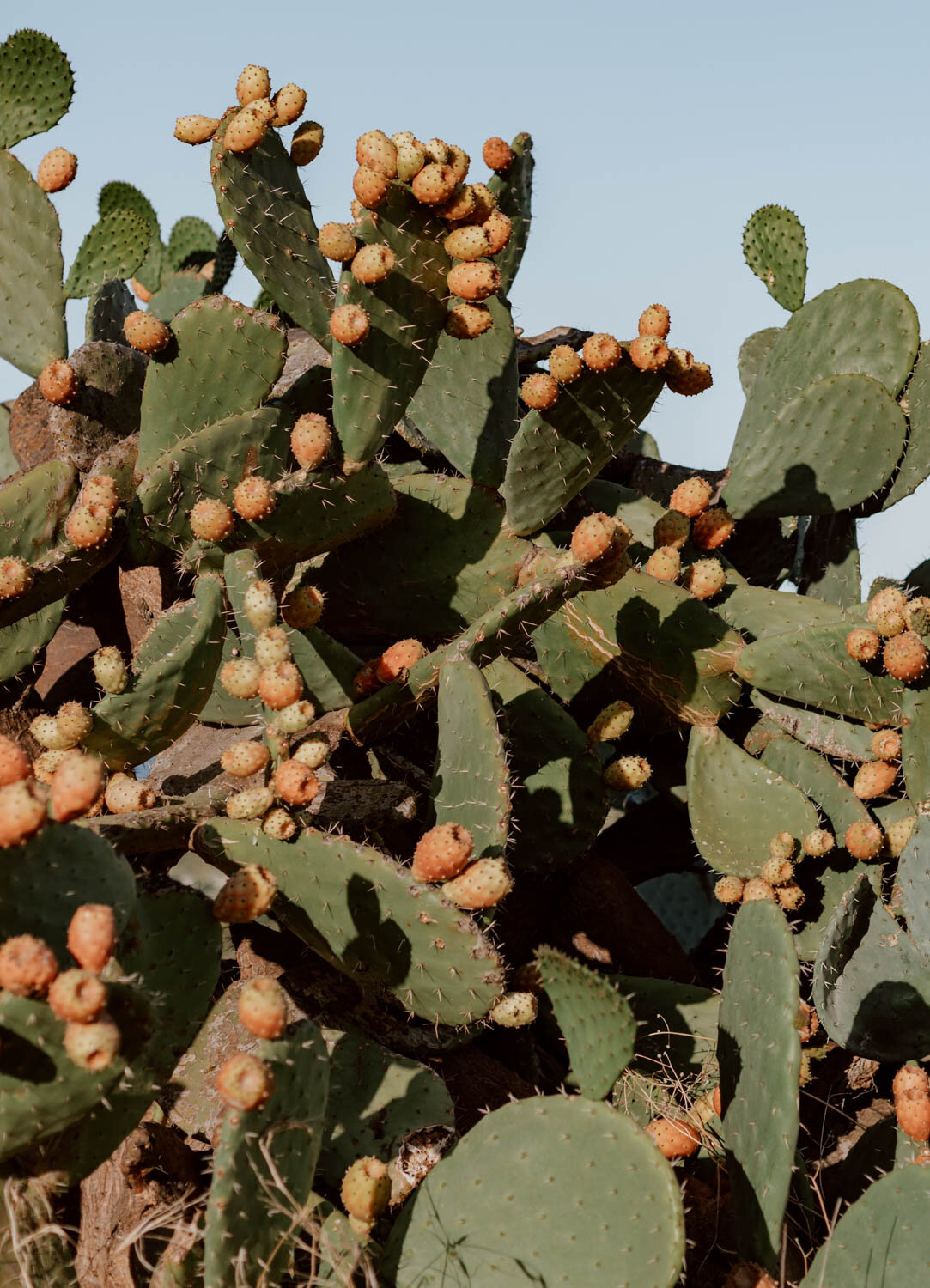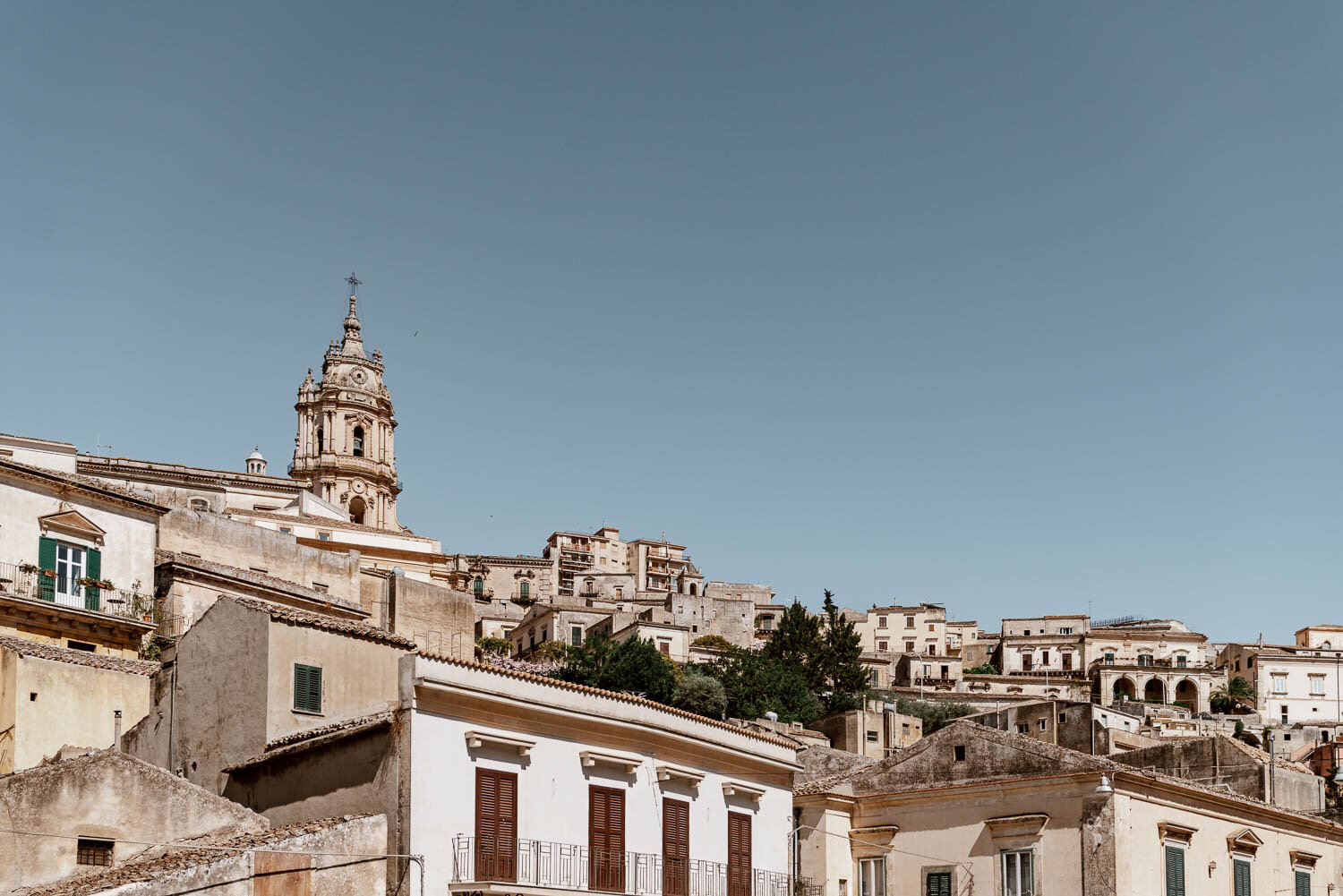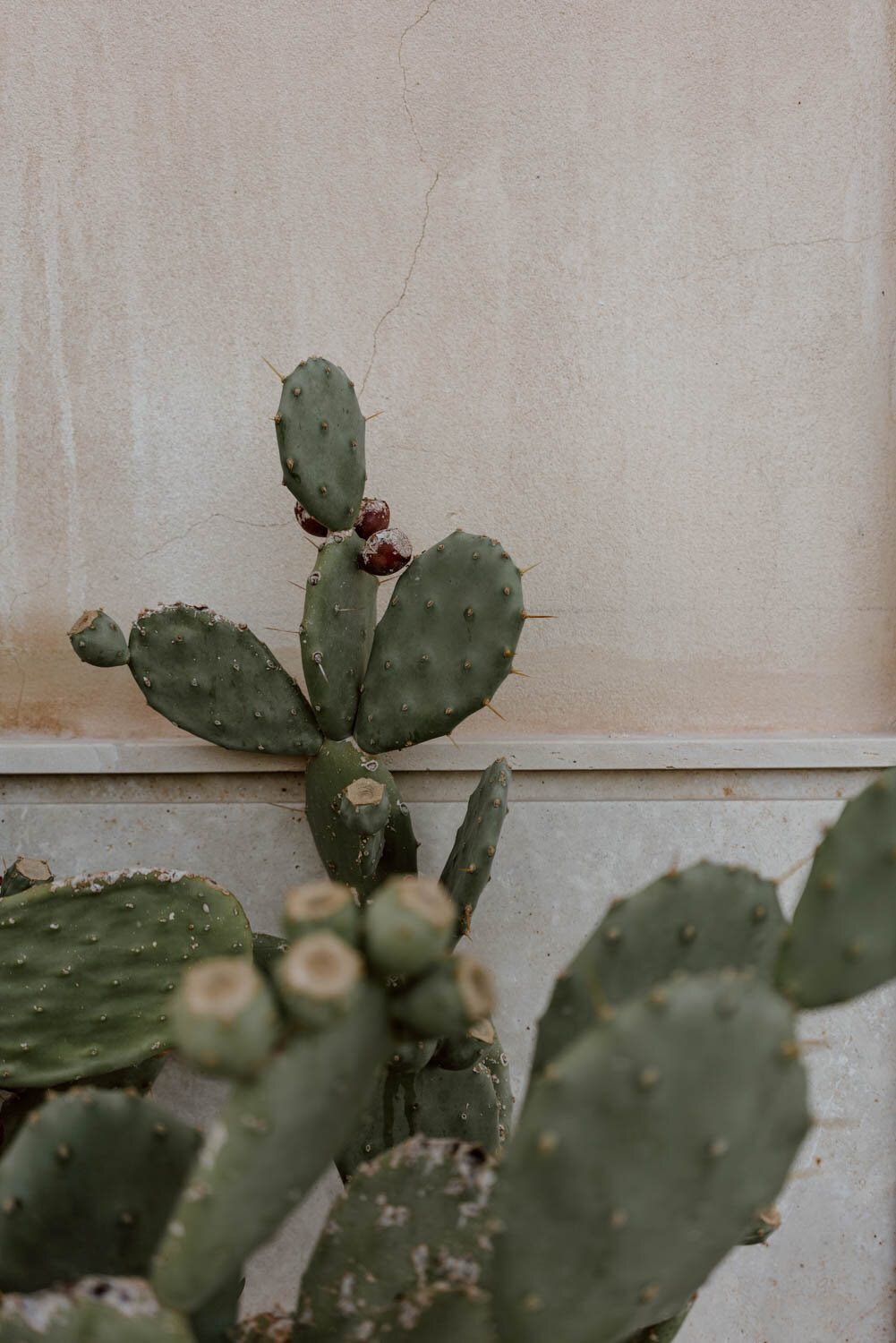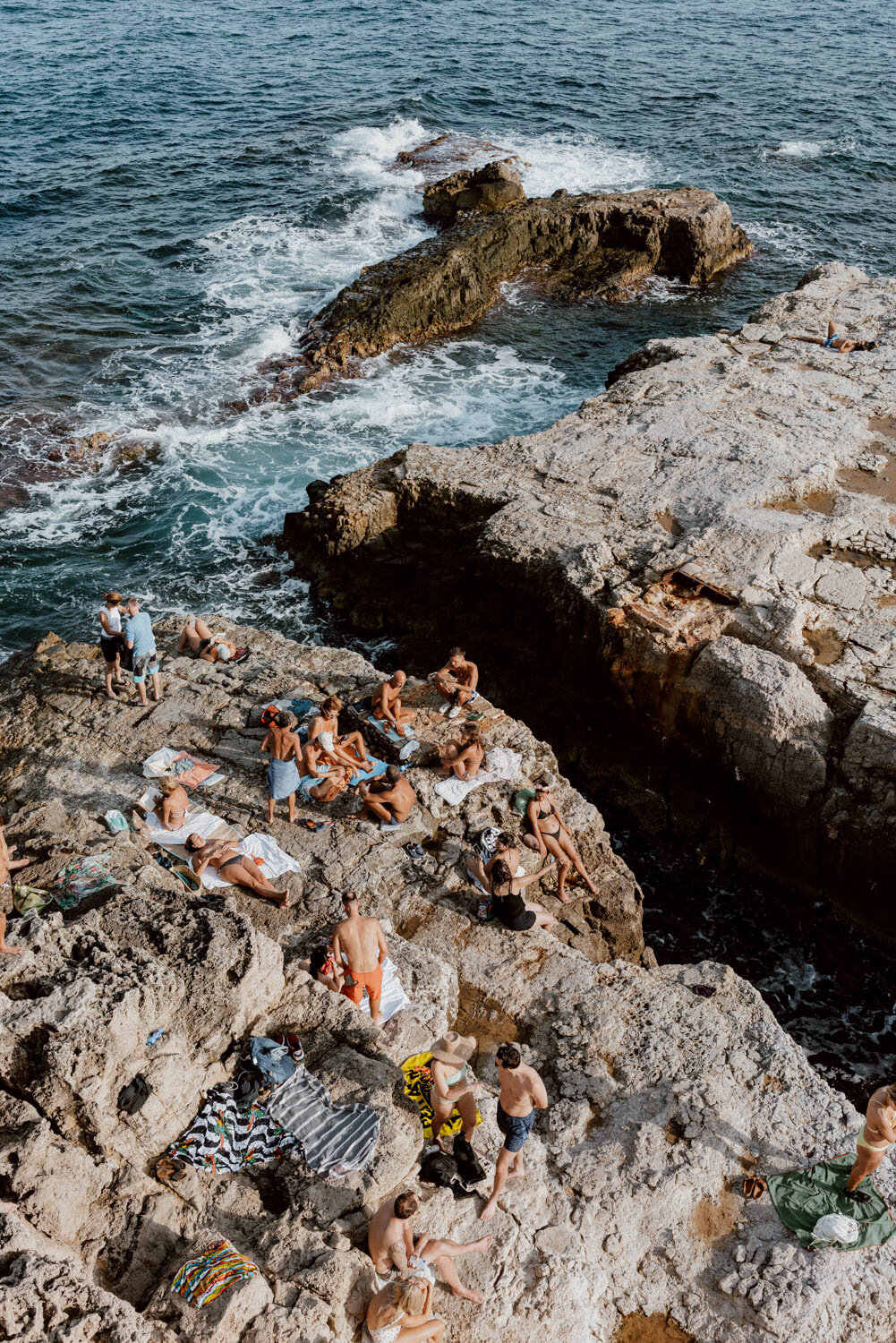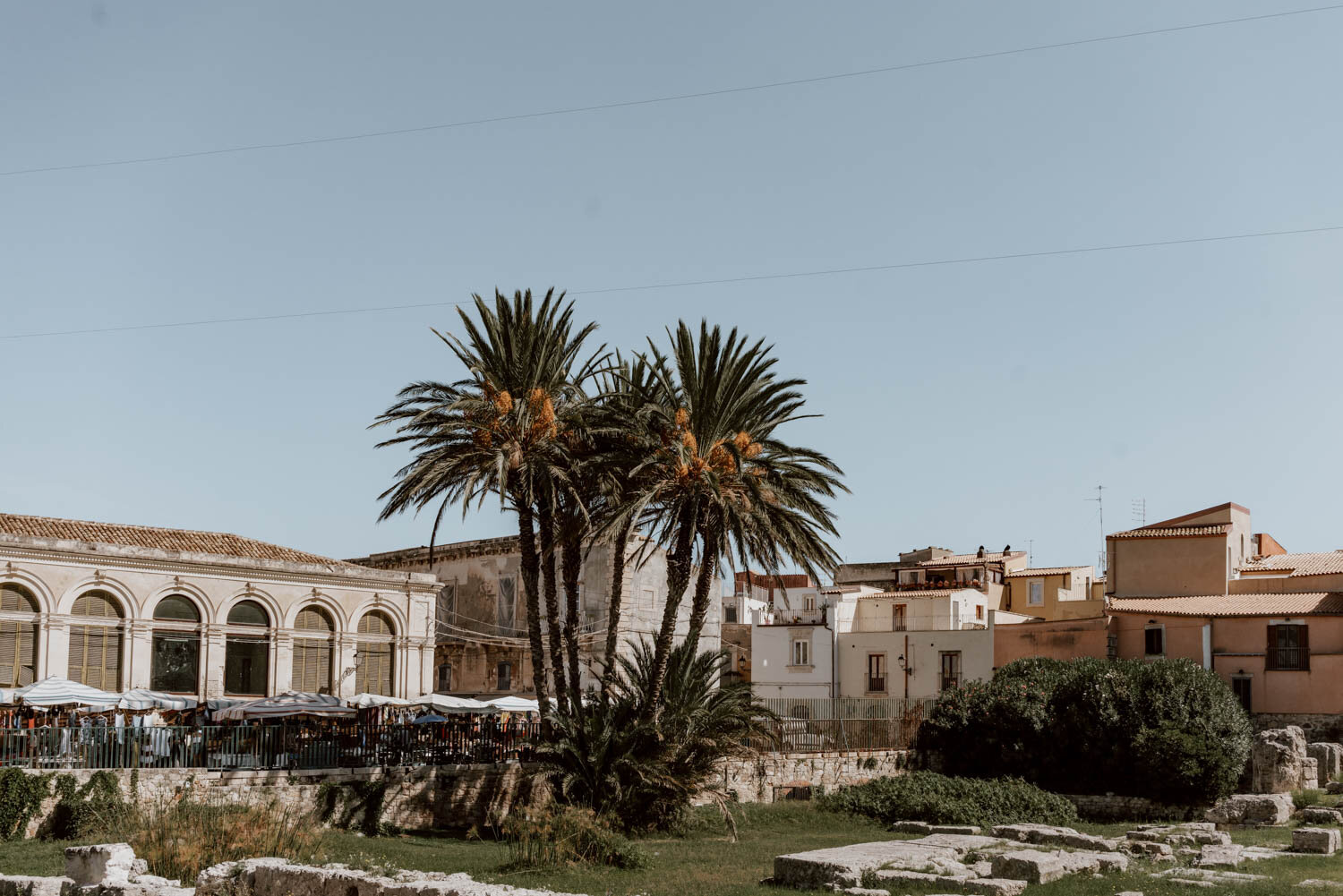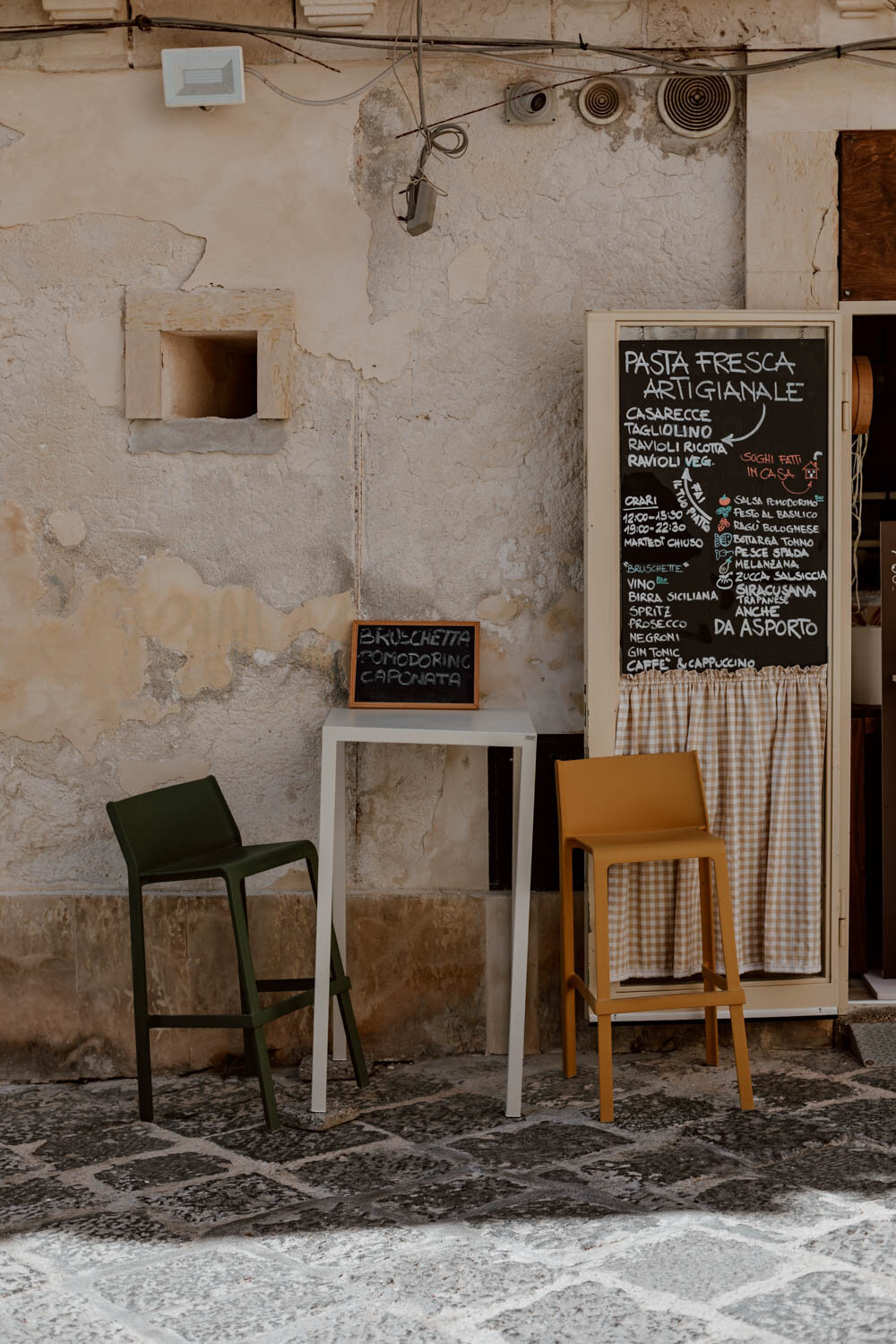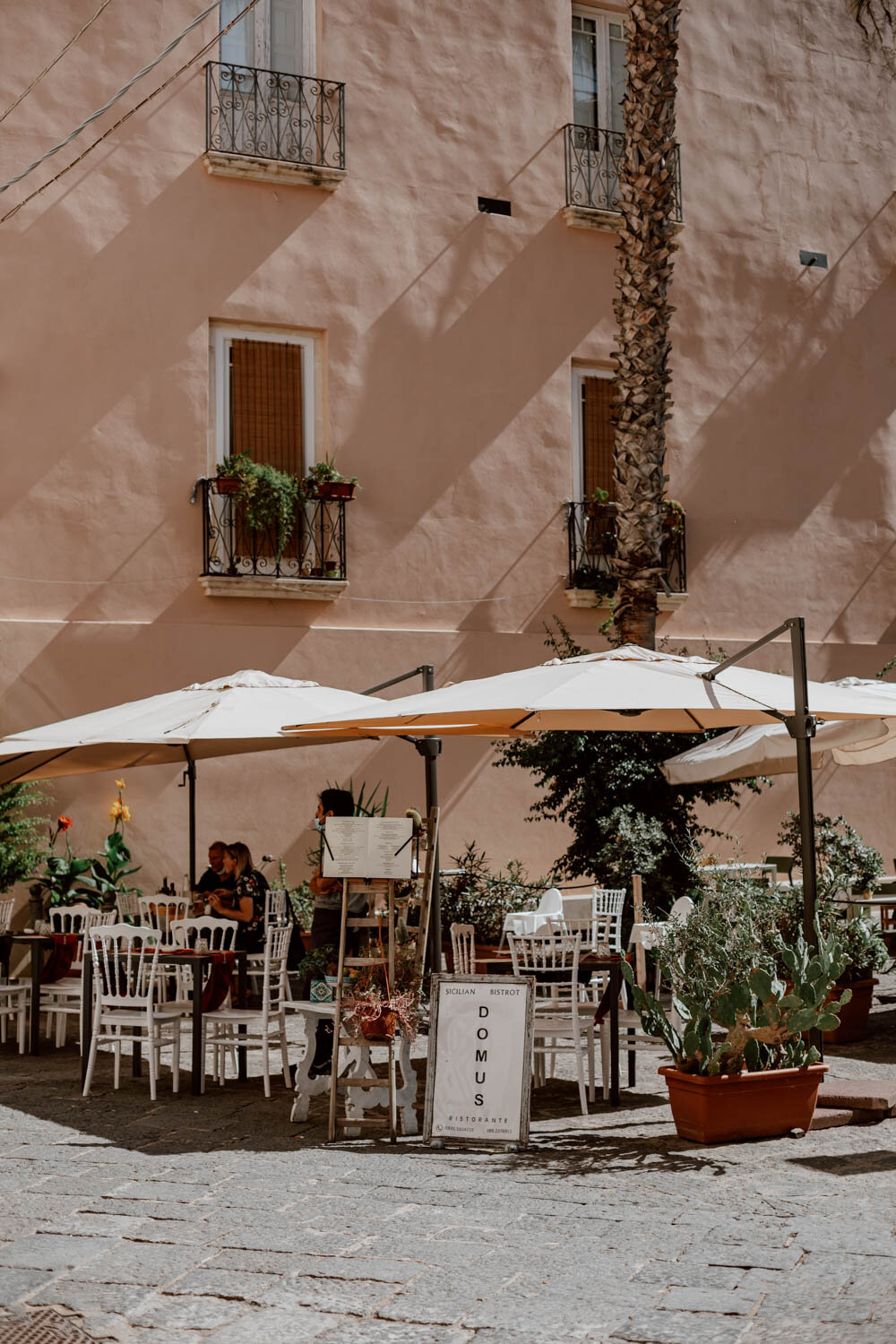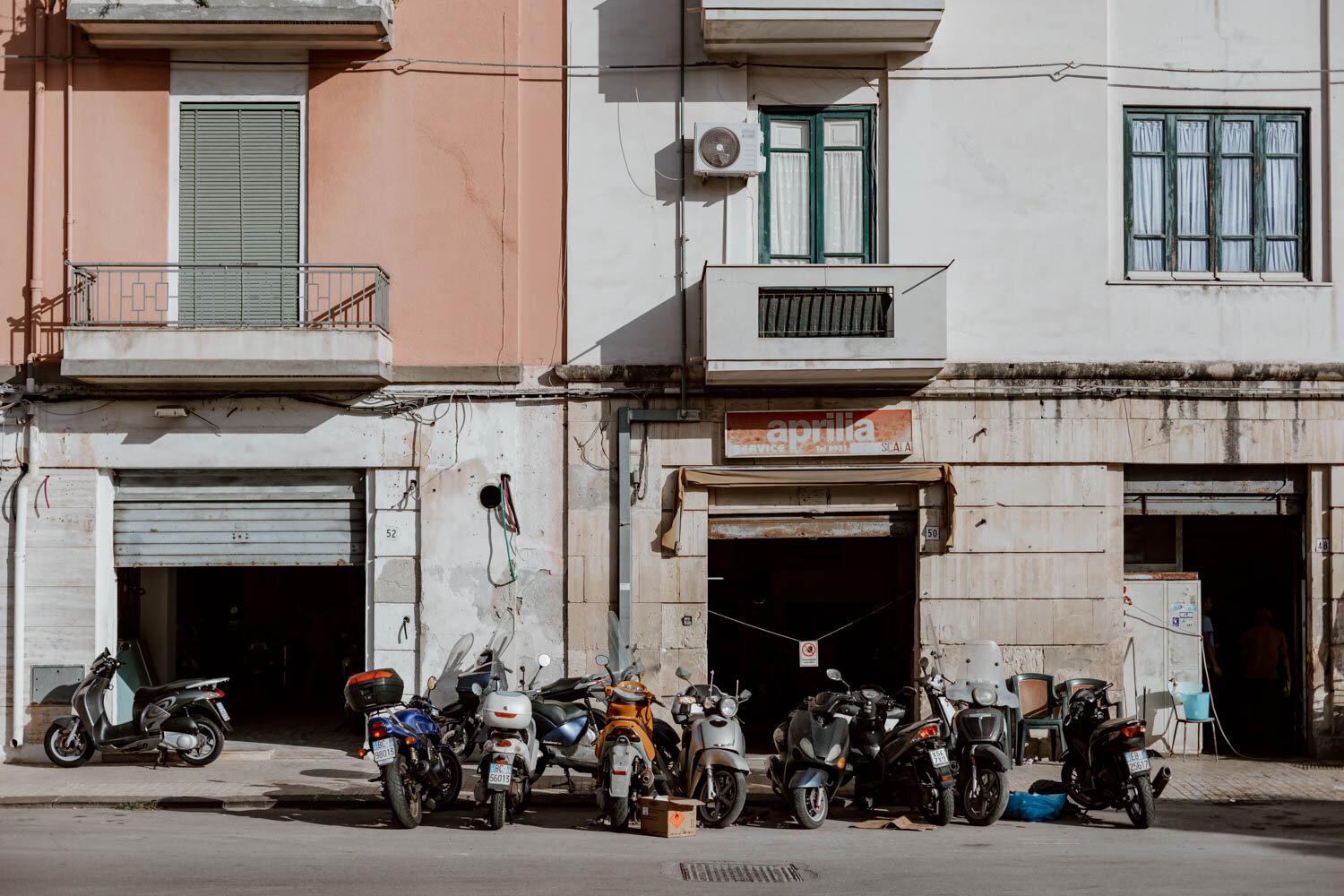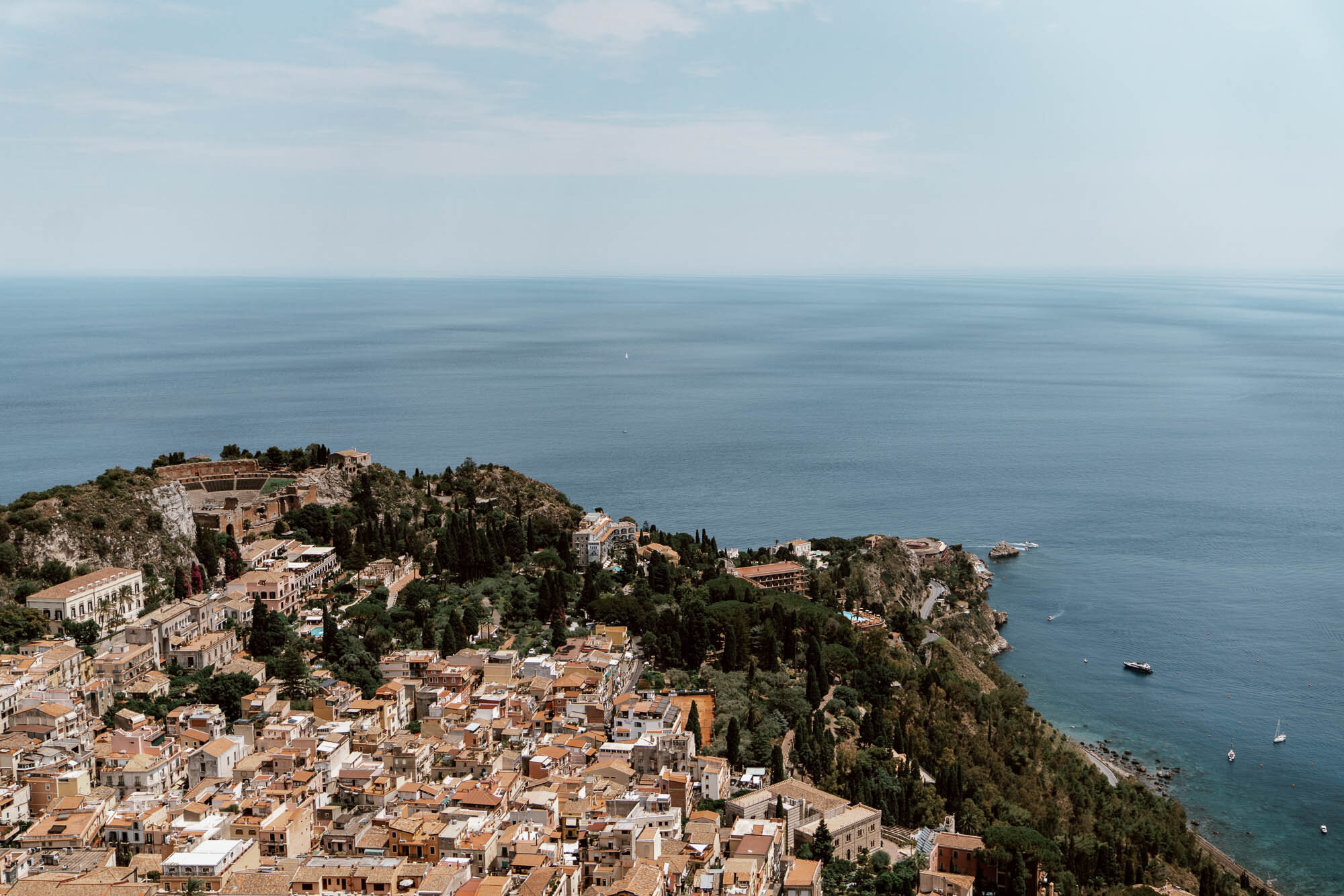Planning a visit to Syracuse, Sicily and the neighbouring island of Ortigia?
Our guide for travellers has got you covered on the best things to do, where to eat + stay, plus advice on transport connections.
The second time’s a charm it seems.
Although we had spent the previous summer slowly road tripping around the perimeter of Sicily - from Palermo all the way back round - there was a place that had got away from us.
Two places actually.
Sort of.
We’re not really sure why we decided to go against various familial and follower exhortations that Syracuse and Ortigia were amongst their favourites in Sicily (part stubbornness, part feeling that it’s our job to find the alternative), and yet we did.
And so, skip forward about fourteen months to a backstreet bar where we’re determining where to go after Naples; the late summer sun on this particular adventure is fading and falling south, and we’re not keen to let it go with the prospect of a long British winter ahead of us.
An earlier than expected return to east Sicily, and a later than necessary first visit to Syracuse and Ortigia, appears to be only answer; our own ‘eureka’ epiphany to bring us to the home of the man who made that phrase famous. A place where the buildings drip honey, layers of a very Sicilian history can be cut through as easily as a fresh parmigiana di melanzane, and you’re never too far from the sea.
In this guide for travellers, we’ve shared the best things to do in Syracuse and Ortigia, plus tips on where to stay + eat, transport connections, and a few essentials to know before you visit.
This is our guide to Syracuse, Sicily.
Are Syracuse and Ortigia The Same Place?
Firstly though, it's important to head off a little confusion that some of you may have at the moment (or prevent it from arising later down the line).
It's not uncommon to hear 'Ortigia' and 'Syracuse' referred to as two different entities, and we thought they were until we started doing proper research for our own visit.
It was with relief, and a little regret, to learn that the island and the city are right next to each other; you may not even realise that you've walked across either of the two short bridges which connect one to the other.
The Ancient Greek city of Syracuse (more on that later) had its founding nucleus in Ortigia - also spelled Ortygia - so the two have always been intertwined. Today, the island is essentially the ‘old town’ or ‘historical centre’ of the city of Syracuse, as well as its most popular area for visitors.
So, don't be confused: a visit to Syracuse, Sicily is also going to be a visit to the island of Ortigia.
And yes, the Syracuse in New York is named after the one in Sicily!
The Best Things to Do in Syracuse and the Island of Ortigia
Sunbathing & Swimming Days
As we've explained in our Best Beaches in Sicily post, first-timers to the island in search of long stretches of golden sand may need to adjust their expectations.
Although Syracuse does offer excellent access to the sea, it isn't what we'd term a 'beach holiday' destination if you are looking for that sort of place; the town's beach (Spiaggia di Cala Rossa) is very very small and shingle/pebble.
There are however a few gorgeous, popular swimming and sunbathing spots on the rocks along the Lungomare in Ortigia. The best by far is by Forte Vigliena (Google Maps), and we adored our afternoons there. If it's too busy, you can find a couple of alternatives here and here.
With Fort Vigliena, the rocks are quite harsh and sharp in a few areas, so tread and lie carefully! And do note that if you’re visiting during the summer season (beginning of June to end of September), a good sized wooden sundeck is erected here to accommodate more bathers. This is free of charge, but if you want to beat the sun-worshipping Italians, you’ll need to get there early!
Alternatively, there are two other paid-for sundecks/lidos nearby that provide patrons with sun loungers and a slightly more upmarket vibe:
Solarium Ortigia Nettuno | Costs €40 for two loungers and an umbrella but included in the price are showers, toilets, two protected sea swimming areas with lifeguards, a decent restaurant, as well as a drinks service at your sunlounger. Find it here on Google Maps.
Zefiro Solarium & Lounge Bar | This solarium has really mixed views - pricey and bad service, although it does have a somewhat luxurious vibe to it. Find it here on Google Maps.
If you simply can’t be doing without a sandy beach, you’ll be pleased to discover that there are a number of popular options within a short drive from Ortigia. These include:
Arenella | At just over 10km from Syracuse, Arenella is the closes decent sandy beach. Offers a good mix of free beach and lidos. Do note that due to its narrow nature, it may be best avoided during high season.
Fontane Bianchi | A wonderful stretch of white sand, this is probably our top pick for those looking to escape to a beach on a day trip from Syracuse/Ortigia. Also easily accessible with public transport.
Avola Beach | Situated in the city of Avola, this sandy beach was not quite our cup of tea due to its heaving nature in the warmer months but a super popular spot nonetheless. Good for families.
Calamosche | At the end of a dusty trail in the Vendicari Marine Reserve, lies the pretty little cove of Calamosche - named Italy’s best beach in 2005. No facilities but very popular in summer.
Marchesa del Cassible | This beautiful beach is just south of Fontane Bianchi but a completely different experience. No sunbeds, no lidos just parking and nature.
Plan | Where To Find The Best Beaches in Sicily
Plan | The Art of the Italian Lido
Explore The Ortigia Street Market
A smaller and slightly saner version of the Sicilian markets you'll find in Catania and Palermo, you can't leave without treating your senses to the sights, sounds, and flavours of Ortigia's outdoor market.
Down this sliver of a street where the raw ingredients of the Sicilian cookbook are laid out atop rickety stalls and tabletop, theatre and treasures are found: the man with a megaphone selling fish harvested from the nearby sea that day, the fresh oyster poser, cries and calls of butchers, photogenic piles of purple aubergines and blood-red cherry tomatoes, bins of olives and sundried tomatoes, jars of homemade pestos and pastes.
It is a joy.
Don't simply wander though - buy some fresh ingredients to take home for dinner or time your visit to work up an appetite and have lunch at one of several great options in the market. The carnvirous sandwiches as Caseificio Borderi have become quite famous, and the charismatic patron entertains whilst building up a sandwich even Tony Soprano would balk at.
Alternatively, you can sit down at popular and highly rated Carnizerria, a seafood restaurant bringing a bit of a modern spin on traditional dishes.
The Market Essentials
The outdoors market is open daily (except Sundays) from about 7 am until 2 pm, although do note that some stalls can pack up before the official closing time.
The market takes place on the streets nearby the Temple of Apollo ruins, and you can find it here on Google Maps.
Eat at MOON
We ate damn well in Syrcause.
And the reason wasn’t solely because, being in our second to last week of seven in Italy, every meal was taking us closer to the final one. Instead, it was that after our month exploring Sicily the previous summer, we’d left with a few regrets at not having devoured more of the signature flavours and dishes this island has to offer.
When the best aubergine parmiagana, pistachio sauces, arrancini, and pasta alla norma are available every day, it's really got be taken advantage of.
One place that foodies cannot miss in Syrcause is MOON (an acronym for ‘Move Ortigia Out of Normality’), a buzzing contemporary restaurant and art space which creates faithful vegan versions of local antipasti, primi, and secondi courses alongside a few more innovative dishes.
We highly recommend it.
We arrived with no reservations and they were able to seat us, but we’d highly recommend booking ahead, especially if there’s a particular time you want to eat or there are more than two of you. You can find it here on Google Maps
There a few other restaurants in Ortigia that we can very happily recommend to you after our own meals there, all of which you can find them at the end of this post!
The pretty street which MOON is on - Via Roma - is also home to several artisans’ shops.
Linger Around Piazza Duomo
The grand dame of Ortigia, with hues of honey and ivory, wealth and decadence, style and salvation, history and culture.
As with most Italian cities, it's the Piazza Duomo which forms the hub of the city. Flanked by the imposing baroque facade of the Cathedral and several palazzos, it will be the priciest espresso you'll have in Syracuse, but the setting and people watching are unmatched (there's often a wedding going on too).
You can also visit the little Chiesa di Santa Lucia alla Badia in the corner of the piazza (maps), an intimate church which drew thousands in the last decade due to its housing of one of Caravaggio's last works.
Fellow devotees of the renegade artist should know in advance however that his 'Burial of St. Lucy', which used to hang there, is out for long-term restoration (a fact we were gutted to discover) and whilst some hope that it will return to Ortigia, an ongoing dispute may mean that it returns to its original home in Basilica of Santa Lucia al Sepolcro, in central Syracuse. Please do let us know in the comments if / when / where it does come back.
Caravaggio in Syracuse Update | A reader was kind enough to let us know the original painting is currently hanging in the Chiesa di Santa Lucia Extra Moenia (find it here in the Piazza Santa Lucia). There is also a copy hanging in the Basilica Santa Lucia di Sepolcro in the same square (November 2021)
In a diversion from the typical Duomo found in Italian cities, Syracuse’s Cathedral (Chiesa Cattedrale Natività di Maria Santissimait to give its full title) was actually built upon the skeleton of a more than 2000 year old temple dedicated to the Greek goddess of Athena. Converted to a church when the island was evangelised by St Paul in the 7th century, there are a couple of hints to its long history for those that choose to go inside. If you wish to enter Syracuse Cathedral it’s €2 for adults or free for various concessions.
As with all churches in Italy, these are active places of worship and respect for this is essential. Visitors should wear appropriate clothing (no shorts, hats, or vests) and act in a way which does not impact negatively upon those who come here for faith.
Somewhat hidden away, on Via Pompeo Picherali, you'll also find several artisans selling handcrafted jewellery and other curios.
Syracuse has one of the most important historical sites in Sicily (more on that later), but two other historical landmarks not to miss in Ortigia are:
Fontane di Diana | Located in the grand Piazza Archimede is Giulio Moschetti's Art Nouveau masterpiece, Fontana di Diana. There are also a number of little outside cafes in this area, so it’s an excellent spot to grab a drink.
Tempio di Apollo | Considered to be the oldest Doric temple in the world, its location in the middle of busy market streets, bars, restaurants and day to day life, would be a little unusual were it not for Syracuse’s extensive Greek history. You are unable to enter the temple, which is largely in ruins now, but it can easily be viewed through the fence.
Get Lost in Ortigia
The one piece of advice we always have for places as attractive and historical as this is, once you’ve made the plans you’re happy with, to simply wander around with curiosity and open eyes.
Ortigia is really quite small (about 1 km long, less than that wide), and you could walk briskly around its outline in less than 15 minutes - but it’s best to get lost and linger in its narrow whitewash backstreets running from sea to sea, stop off for a coffee or a cold beer and watch the world go by in a piazza, take a chance on a little restaurant you find or feel fancy as you go down Corso Giacomo Matteotti.
Although you’ll likely come across it naturally, be sure to take a wander through Ortigia’s Giudecca, or Jewish quarter. Although very little of the original quarter remains, this quadrilateral area bordered to the west by Via della Giudecca, to the south by Via Larga, by the sea to the east, and criss-crossed by parallel streets (Via dell’Olivo, Vicolos I II, III and IV Giudecca, Vicolo dell’Arco and Via Minniti) is undoubtedly one of the most photogenic and picturesque pasts of the island.
Buried deep beneath the Alla Giudecca Hotel, one historical feature that does still exist is an ancient Jewish miqwe, or ritual bath - reputedly Europe’s oldest. And remarkably, it’s possible to visit. Tours run every 30 minutes between 10am and 6pm May to October, with reduced hours the remainder of the year. The cost is €5 per person. Find it here on Google Maps.
Besides the impressive historical landmarks mentioned in the ‘Linger Around Piazza Del Duomo’, other places not to miss during your explorations of Ortigia’s pretty streets include:
Museo dei Pupi | The Puppet Museum, tells the stories of this local folk tradition, and the entertainment it provided during the 19th century. You can even watch a live performance at the nearby Teatro dei Pupi. Find the museum here on Google Maps.
Silk in Ortigia | Pick up a one-of-a-kind, handpainted silk scarf or canvas inspired by the Mediterranean, created by artisan, Helene Moreau. Find it here on Google Maps.
Ebano | The ultimate spot for those that love unique pieces to bring home from their travels, Ebano offers all manner of bags using Tuscan leather and recycled pieces. Find it here on Google Maps.
Chiodo | A multi-functional space aimed at promoting local craftsmanship that sells a wide variety of artisans’ work with a focus on sustainability and recycled materials. It’s very cool! Find it here on Google Maps.
Circo Fortuna | The place for hand-painted ceramics, t-shirts and posters all with original designs created by the Dutch-born, Ortigia-based artist Caroline van Riet. Find it here on Google Maps
Zaratan | Owned by a Sicilian photographer-musician duo, Zaratan has an excellent selection of books, vinyls or artworks. Find it here on Google Maps.
Beyond the pretty area where the two meet with the bridges, Syracuse and its wide, block streets has a less obviously photogenic appeal…but to dismiss it for that and only pass through for some ruins would be foolish. There is life, love, character, beauty, history, and culture on every corner there too.
If you’d prefer a guided walking tour of the city and several of the attractions we’ve mentioned above, then you can find several highly-rated options here.
Indulge Pistachio Pangs
Everyone knows the best flavour gelato is pistachio right? And you should not leave Syracuse without having eaten your quota.
Specifically, from the delightful hole-in-wall ‘Gelateria Gusto’ (Google Maps), home to perhaps the best (and no, we are not being hyperbolic here) pistachio gelato we’ve eaten on the entire island of Sicily.
And we have tried a lot!
Additionally, they make a damn good pistachio granita too. Although in the hot summer sun, we’d forgive you for opting for the lemon version instead as there’s perhaps nothing better to quench your thirst (or soothe a wine-induced hangover).
Another good option is Il Cucchiaino (Google Maps) and Gelateria Fiordilatte (Google Maps) is also great, but it’s quite a walk from Ortigia and out of the way.
Oh, and if you’re in the mood for pastries and cannoli, you can’t miss the old school charm of Pasticceria Artale.
Sunset Drinks on Lungomare Alfeo
A golden hour passeggiata on the road encircling Ortigia is always a good idea.
The sunsets on the western side of the island are quite wonderful, and the whole section bubbles with life and love from about 5 pm onward, with couples walking hand-in-hand, birds swirling and chorusing amongst the trees of Giardino Aretusa, the waves gently lapping, local men fishing from the rocks in front of the Arethusa Spring.
Breathe it in, walk it slowly, and do try to enjoy it each evening you’re in Syracuse.
Oh, and be sure to end with a sunset drink or two.
The most popular spots are along Lungomare Alfeo, where you'll find a handful of bars set up specifically for this moment. Take your pick between drinks at Sunset Ortigia (Google Maps) or Mikatú (Google Maps); prices are all marked up quite a bit given the traffic they see in the early evening, but it's still worth it for the setting.
We recommend turning up a little earlier too to make sure you get a seat and can watch the sky change.
Alternatively, walk north along Lungomare Alfeo to the marina, where you'll find fancy yachts docked, locals strolling or excercising along Passeggio Foro Vittorio Emanuele II, as well as a few cocktail bars and restaurants. It’s less of tourist hotspot and the atmosphere is quite different, although do note that this is one of the only places we’ve stopped just for a drink and been charged coperto, which could affect your bill quite a lot.
Not sure what the coperto is? Check out our quick guide.
Tip | The beguiling contours of Ortigia, with the limestone jutting out into the blue, is spearheaded by Castello Maniace. Built in the 13th century and named after the man who reconquered Syracuse from the Arabs in 1038., it’s been used as royal residence, a prison, and a defensive fortification. Now it offers views, historical insights, and sometimes host exhibitions.
We don’t think a visit is essential if your budget is tight, but it’s open 8.30 am - 7.30 pm in the summer season. Find out more and buy tickets here.
Go Underground At The San Giovanni Catacombs
It may seem foolish, given the beauty and sunshine above ground, to go subterranean for a half hour, but these catacombs in Syracuse are really cool (and slightly creepy).
Covering about 10,000 square metres, the Catacombe di San Giovanni are a labyrinthine limestone complex of fading frescoes, honeycombed tombs, and secret chapels from the 4th century AD. Found beneath the photogenic roofless ruins Basilica di San Giovanni, these are the second largest catacombs in Italy outside Rome.
They should be an unmissable, fascinating part of a visit to Syracuse, but there is a caveat.
It's only possible to visit the San Giovanni Catacombs with an English/Italian guided tour run by the site, with departures at fixed times, and our experience chimes with many other people in that the tour could be a lot better. The guide we joined had a very...peculiar manner...and seemed like he couldn't wait for us all to leave as soon as the tour had started. The explanations were also rushed through at breakneck speed, with no scope for questions or clarification.
This was a real shame as ancient sites like this only really come alive with the explanations and storytelling of the person leading you through them.
The Catacombs Essentials
The San Giovanni Catacombs are open daily from 9.30 am –12.30 pm and 2.30 – 5.30 pm, but we recommend arriving 10-15 minutes in advance to buy your ticket there and be assured of a place. The tour lasts about 30 minutes and it's €8 for adults, €5 for under 12s.
You cannot take pictures or video underground, so please respect this to support preservation efforts.
Tip | There is an archeological museum nearby - Museo Archeologico Regionale Paolo Orsi - but having visited the Neapolis just before the catacombs, what we really craved was an afternoon Aperol Spritz! However, as Paolo Orsi is considered to be one of the very best archeological museums in all of Europe, if you have a genuine interest, we’d highly recommend checking it out. You can buy single tickets on arrival, or alternatively book a combined Museo Archeologico/Neapolis ticket which lasts three days.
Please do make a point of passing by Basilica Santuario Madonna delle Lacrime (maps), a modern giant concrete structure as far removed from everyone's typical idea of an Italian church as night from day. We were captivated when we stumbled across it!
It's striking inside too, but this is an active place of worship not a tourist attraction, so we'd only recommend entering if it's not busy and you are in appropriate clothing.
Visit The Neapolis
Question for you: Archimedes, he of the 'eureka' moment in the bath, was Greek right?
Well, sort of.
Sicily has been at the crossroads of various Mediterranan civilisations over the last two milennia - from the Phonecians, Byzantines, and Arabs to Romans and Normans - and all left their impact.
It is probably the Greeks who were most influential though.
Magna Graecia (Greater Greece) was actually the name given by the Romans to many sections of the southern Italian coast due to the level of historical Greek settlement in these areas, and Syrcause was the principal Greek city of ancient Sicily. Cicero called it ‘the greatest Greek city and the most beautiful of all’.
Archimedes - that famous mathematician, philosopher and inventor - was actually born in Syrcacuse and spent most of his life there...obviously the country of Italy was nowhere near its post-Garibaldi 19th century creation then, but we were personally amazed we never knew this before! Several of Archimedes’ creations, including the catapult and a blinding mirror device to set fire to boats, were even used in the (failed) defence of Syracuse against the Romans in 214 BC, and he was ultimately slain by an invading soldier.
So, that’s the reason why in Sicily and elsewhere in southern Italy, there’s a lot of Greek stuff. The Valley of the Temples outside Agrigento is the undoubted jewel of the archaeological sites showcasing how deeply rooted Greek influence was in south-east Sicily, but the ruins at Neapolis Archaeological Park in Syracuse come a close second.
An open-air museum of sorts, it hosts a jumble of complexes and constructions including the 5th century BC Teatro Greco, which still hosts performances in early summer. The acoustics and intrigue of the Orecchio di Dionisio (Ear of Dionysius), supposedly so-christened by Caravaggio, are also pretty special; the legend goes that the tyrant Dionysius used the cave as a prison as you could hear the whispers and secrets of those kept there.
These ruins are the principal reason for lots of people to visit Syracuse.
The Neapolis Essentials
The Parco Archeologico della Neapolis (Google Maps) is a good 30-40 minute walk from Ortigia, offering a good chance to explore more of Syracuse on the way there/back. Alternatively, jump on the Siracusa D’Amare (€1 per person, buy on board) bus for locals and tourists which does a regular loop of the city and includes a stop at the ruins.
There’s also a public bus which runs from the bridges, but we’re afraid we don't know the specific number or price (do let us know in the comments!).
There's very limited paid parking by the site entrances.
The site is open daily 8.30 am - 7.30 pm in the summer season (April to August), with earlier closures outwith. Tickets cost €13 for adults, €6.50 for concessions. Tickets can be booked in advance here or here, whilst you can also purchase in-person at the site’s ticket office. Guided tours are also offered at the site.
We recommend at least 90 minutes for this, longer if you have a really keen interest in the subject matter or period. It does involve a bit of walking around the open-air site, so try to visit earlier in the morning or toward the end of the afternoon.
Hat, suncream, comfortable shoes, and plenty of water recommended.
Oh, and if you see a man serving homemade granita from the coolest old truck outside, then buy some from him! Not only is it delicious, but he's a character.
Rent A Bicycle
A super popular thing to do in Syrcause, but not essential.
If visiting for a day, cycling around the island and to the Neapolis ruins and the catacombs would be charming and allow you to cover a bit more ground than walking (and being on two wheels is usually more fun than on two feet). The city and the island also offer a generally pleasant cycling experience, rather than a terrifying one.
We were fortunate that our Airbnb included two bicycles for us, but you'll find rentals all over town. The average price was around €18 for 8 hours / €30 for 24 hours for the standard bikes (E-bikes also available).
If you rent and find costs are now higher / lower, then do let us know in the comments!
Both our Airbnb owner and every single bike rental guy were very insistent that you always lock the bicycle up in a secure area and never ever ever leave it outside overnight. Syrcause and Oritiga feel very safe and laid back, but bike thefts are clearly a common issue.
If hoping to cycle a little further afield, then you should go for the Pista Ciclabile Rossana Maiorca, a dusty cycle path along the coast from the outskirts of Syracuse. It's 5-km one way (you come back along the same path), and led us to some cool little hidden away sunbathing and swimming spots. Not essential if you're only here for a day, but we enjoyed it for the afternoon.
The Pista Ciclabile Rossana Maiorca startpoint can be found here, just by the military monument. It's signposted, flat, and has waymarkers along the route.
You could also head further south to beaches, but that will take the whole day and a bit more planning.
Enjoy a boat trip
If you’re in Syracuse for a few days and keen to enjoy a different perspective on this beautiful coastline, consider booking on to one of the many boat tours that depart from Ortigia.
Most tours last around an hour, and there are a number of different options, the most popular being a trip around the island or the option to visit some limestone caves (and have a swim).
Rival boat operators set up stalls by the bridges to Ortigia (maps) and at Largo Porta Marina (maps) but their prices are almost always the same: €10 per person for the hour-long trip with the potential to combine two trips in one at a slightly reduced rate.
Take A Day Trip to the Val di Noto Or Catania
The south east of Sicily is probably the most popular area with travellers, and Syracuse is a sensible, practical base from which to explore it by rental car or public transport.
The gorgeous UNESCO-listed late baroque towns of the Val di Noto are perfect for a day trip by car or public transport, with the best options being Noto, Modica, and Ragusa.
Catania, an hour to the north, is the major city of eastern Sicily (also in the Val di Noto collection) and easily accessible by train or road.
We’ve shared advice on how to reach all of them with public transport at the end of the post, whilst you should also check out our east Sicily itinerary.
Where To Stay in Syracuse, Sicily and Ortigia
Most visitors will understandably want to stay on the island of Ortigia as its narrow whitewash streets and closeness to the sea offer the most romantic, alluring setting; most places you'll want to go will also only be a short walk or bicycle ride away.
However, for local life, good value, and ease (especially if you've got a rental car), Syracuse offers up a lot of good options. As our visit was the very last stop on that slow seven-week late Italian summer trip, we were delighted to find this stylish Airbnb which included bicycles, and would have been a lot more expensive if it was just 5 minutes closer to the bridges.
Our main piece of advice for accommodation here is, if you're only staying for a couple of nights, then it's definitely best to base yourself in the heart of Ortigia. If happy to walk a little more, using it as a base on your east Sicily road trip, or value is a priority, then you can expand the search further out into Syracuse...but just don't underestimate that a 15-20 minute walk to / from your apartment in the evening for dinner after a full day out exploring isn't always ideal.
Also, lots of accommodations try to give the impression in their name that they’re in Ortigia when they’re actually not…
We've done the hard work for you and shared our pick of the best accommodation in Syracuse & Ortigia so you can find something perfect for your travel style and travel budget.
Hotels
Alla Giudecca | Those ancient Jewish baths we mentioned earlier? You can stay in the stunning hotel located above them. An amazing location right behind the cathedral, Guidecca is also beautiful, full of original architectural features and beautifully designed. All rooms have a balcony. Find out more here.
Ortea Palace | Located in a magnificent building from the 1920s that used to be a post office, this hotel is ideal for those that seek elegance and attention to detail alongside traditional design. Excellent location and large luxurious rooms. Find out more here.
Henry’s House | If you’re looking for a unique hotel in Ortigia, this is it! All rooms are decorated in a bohemian style with wrought iron beds, antique furniture, art work and sea views. Henry’s House is definitely a pricey option, but remains a super popular place. Find out more here.
In a similar price bracket, but with a more traditional design, consider the beautiful Algila Ortigia Charme Hotel.
Hotel Gutkowski | This is very much our sort of place! Located on Ortigia’s lungomare, the rooms are stylishly minimalistic with white washed walls, wooden furniture, accents of colour and original floors. Plus it has a wonderful seaview rooftop! Find out more here.
B&Bs and Guesthouses
Giuggiulena | If you want incredible sea views in Syracuse (from your private balcony no less), you can’t do much better than this! A pleasant mix of modern and traditional aesthetics, guests speak highly highly of the hosts, the breakfast and the rooftop terrace. Find out more here.
Maison Ortigia | An excellent budget option, located right by the cathedral. Rooms are clean, bright and comfortable (some with balconies) and it has a large roof terrace overlooking the sea. Find out more here.
Isola B&B | Proof that excellent bargains can be found if staying in Syracuse (as opposed to Ortigia), this B&B costs just £46 a night! Clean, simple and modern rooms, plus a garden, terrace and simple breakfast included in the price. Find out more here.
Five Rooms | This B&B offers exceptionally good value given its location in the heart of Ortigia and the size of the rooms - some views lovely views out over the square below. Find out more here.
Sciala Ortigia | If you prefer a more contemporary style, you should absolutely consider Sciala! Exceptionally good reviews, all rooms are recently refurbished to a high standard. It’s also excellently located. Find out more here.
Palazzo Del Sale | Our favourite B&B on this list, we love the ‘city meets the sea’ vibe going on in the rooms here, that sensitively incorporates the architectural features of this historic building. Absolutely take a look at the room with its own terrace - it’s just wonderful! Find out more here.
There are two hostels in Syracuse, Casa dei Fiori which is attached to a family home and part of a foundation that helps refugees, and the fancier LoL Hostel Siracusa. Both offer various sized dorms.
Apartments & Airbnbs
There are literally hundreds and hundreds of Airbnbs and apartments across Syracuse and the island of Ortigia, so this list is in no way exhaustive - just a starting point! Because of the sheer number, we have broken these selections down into two lists:
Ortigia
The Penthouse | This huge one bedroom penthouse apartment set over two floors is outrageously luxurious, with a huge terrace, excellent design, superb attention to detail. It’s also incredibly well priced! Find out more here.
Casa Nereo | The perfect blend of old and new, this one bedroom apartment is decorated to a high standard and is excellently located right by the cathedral. Find out more here.
Alternatively, if Casa Nereo is fully booked, be sure to take a look at ‘Elegante Appartamento’.
La Gorgone Ortigia | A typical Sicilian apartment that has been modernised but remains traditional in style. Lovely and light, has two balconies, a parking space and free use of two bikes. Well worth a look! Find out more here.
Dependance | A delightful one bedroom Airbnb that has been thoughtfully decorated. Large and bright bedroom, plus a great private terrace. Centrally located. Find out more here.
La Giudecca | Exceptionally good value for money, this one bedroom apartment is small and a little basic inside, but has a large terrace. Good budget option. Find out more here.
SeaFront Aretusa House | Although the open plan studio nature of this apartment won’t suit everyone, it’s small balcony that opens up directly over the sea meant we had to give it a mention! Find out more here.
Seafront House | Small but perfectly formed (and budget friendly), this one bedroom apartment is located right on the seafront, just 20 m from Ortigia’s small beach. Exceptional reviews. Find out more here.
Attico Maniace | If you love your Airbnbs to be filled with light, have modern touches, plenty of spaces - plus amazing balcony views, then have a look at this one-bedroom space! Find out more here.
The bright and traditional La Caletta, functional Duomus, cute Ortigia mon Amour and traditional Casetta nel Cuore di Ortigia are another four excellent budget options.
Alternatively, if having a really good sized terrace upon which to enjoy breakfasts, dinners and glasses of sunset wine, then we can recommend the following:
Casa Ninì | Marinella Terrace | Apartment with Private Terrace | Residenza Eos | La Vanedda
Syracuse
One Step to Ortigia | This is the Airbnb we stayed in and, whilst it was around a 15-minute walk to Ortigia, we loved our time there. Owned by an architect, it is beautifully designed, bright and airy, has a small balcony and even comes with the use of two bikes free of charge. Find out more here.
House Pi Greco | The vast majority of rental accommodations in Syracuse/Ortigia appear to be one bedrooms, so this two-bed is excellent for families. We especially love what we call the ‘stylish nonna’ design. Fin out more here.
Borgata | Another two bedroom apartment that has recently been refurbished to an excellent standard with modernity where needed but an emphasis on traditional features. It has a huge rooftop terrace. Really quite wonderful. Find out more here.
Attico In Centro | The most expensive option on this list, this top notch fourth floor penthouse apartment with large sea view terrace (area for dining and sunbathing) is both stylish, cosy and practical. Find out more here.
Where To Eat in Syracuse and Ortigia
With an abundance of locally caught seafood, regional wines, and all the produce on display at the farmer’s market, eating out in Syracuse is a joy.
In addition to Moon, there a few other restaurants we can very, very happily recommend to you after our own meals there as well as some to check out (the highlighted names take you to their location on Google Maps).
However, as with all travels in Italy, don't be afraid to simply take a chance on somewhere that is popular with locals, has regional dishes which catch you eye, or gives off a good impression.
If somewhere looks like it’s only really catering to the tourist crowd, then it’s likely not great. Also, get acquainted with what the coperto in Italy is and isn’t before you travel!
Osteria Sveva | The restaurants on Lungomare Alfeo are busier but felt a little too keen on bringing in everyone and anyone; this place on its own a little set back just had a good vibe to it and the food was all delicious. It's only open for dinner, and a great option if you're a couple looking to have a bit of nicer evening out together or a group. Find it here
Osteria Da Seby | Hidden away down a little sidestreet, you have to seek it out. A traditional and authentic menu, we loved our lunch here. It's also open for dinners.
Siculish Street Food Experience | The concept is great, and some people absolutely love it. Personally, it didn't quite meet our expectations and, without sounding like twats, it's probably because we'd tried many of the dishes elsewhere and better. However, this place would serve as a fantastic, open introduction to many of the foods of Sicily with passionate, friendly staff who will explain dishes or answer questions.
Zenzero | A cosy, homely vegan place tucked away on Via Carvour.
Ristorante Sicilia in Tavola | Unpretentious little restaurant with an excellent, authentic Sicilian menu (a good idea to book ahead for the evening).
Cola Pasta | A casual little hole in the wall with fresh homemade pastas and sauces for lunch and dinner served quick.
Domus | Set in a charming square not too far from the cathedral, this popular restaurant serves up traditional food and fresh pasta.
Al Mazari | If you won’t be heading over to the west of the Sicily, then this excellent restaurant will bring the food of Trapani to you! In the Michelin guide, and has received lots of awards.
Piano B | We didn’t eat here, but our Airbnb host said that it serves the city’s best pizza!
How To Get to Syracuse
Although it doesn't have an airport of its own, it's really easy to make Syracuse your first stop after flying into Sicily. If travelling from elsewhere on the island via public transport, you may find that bus connections are more frequent and direct than trains (this is a Sicily thing, rather than an Italy thing).
Siracusa train station (maps) is a good 20-30 minute walk away from the centre of Ortigia but the Siracusa D’Amare electric bus (€1 for 90 minutes) does a regular shuttle loop from there over the bridges, around the island and to the ruins in the north of Syracuse, so you can easily just wait for that (buy tickets on board) - see the route and stops here.
We've shared the key info on tickets, travel times, transport connections, and where to park with your rental car.
If booking a bus or train to it, note that it’s spelled ‘Siracusa’ in Italian.
From Catania Airport
If you don't wish to spend time in the city of Catania, then you can simply hop off the plane and straight onto a 70-minute bus direct to Syracuse.
Interbus is the best option with hourly departures. Tickets cost €6.40, and you can find timetables and book in advance here. It's also possible to buy from the kiosk at the airport, and there are a few other bus companies operating there too.
The last stop in Syracuse is Corso Gelone, from where it's a 10-minute walk into Ortigia.
If picking up your rental car at the airport and driving straight to Syracuse, then it'll take you about an hour from the airport. However, we strongly encourage you to read this post - 15 Essential Things To Know Before Driving in Sicily - before you travel or get anywhere near a road. Also, make sure to have a look at our east Sicily itinerary for more advice.
By Train
As mentioned, Siracusa train station (maps) is a good 20-30 minute walk away from the centre of Ortigia and 10-15 minutes from popular areas to stay within the city itself.
The most common route for arrivals will be to / from Catania Centrale, with journeys taking an hour. There are also local trains to / from Noto (30 minutes), Modica (2 hours), and Ragusa (2.5 hours).
If hoping to travel to Syracuse from Taormina, then there are both direct trains and those requiring a transfer in Catania.
For journeys from/to the north and west of the island (i.e. Palermo or Trapani) it's likely to require at least one change, departures will be infrequent, and the overall travel time may not be worth it (that's why the bus offers a more convenient option).
From mainland Italy, there are daily intercity trains from Rome and Naples, but the journey is 8+ hours and usually requires a change in Catania.
For more advice and schedules, read this post: 12 Essential Tips for Travel Travel in Italy.
By Bus
Interbus offers affordable and convenient access to Syrcause from elsewhere in Sicily, often with better connections and travel times than the train.
There are direct daily departures for the following routes: Noto (1 hour) Taormina (2.5 hours), Palermo (3.5 hours).
The final stop is usually Corso Gelone, which is a 10-15 minute walk to Ortigia or you can wait for the electric shuttle bus.
By Rental Car + Parking
The city is a great base and stop on an eastern Sicily road trip,but bear in mind that ZTLs are very common on the island of Ortigia, so it is necessary to check with your accommodation in advance about the parking situation if you're going to be based there.
If visiting Ortigia for the day, or looking for an alternative place to park up, then we recommend making a beeline for this easy-to-access paid parking area (Google Maps) at the top of the island (€1.50/hour).
Read this post - 15 Essential Things To Know Before Driving in Sicily - before you travel.


